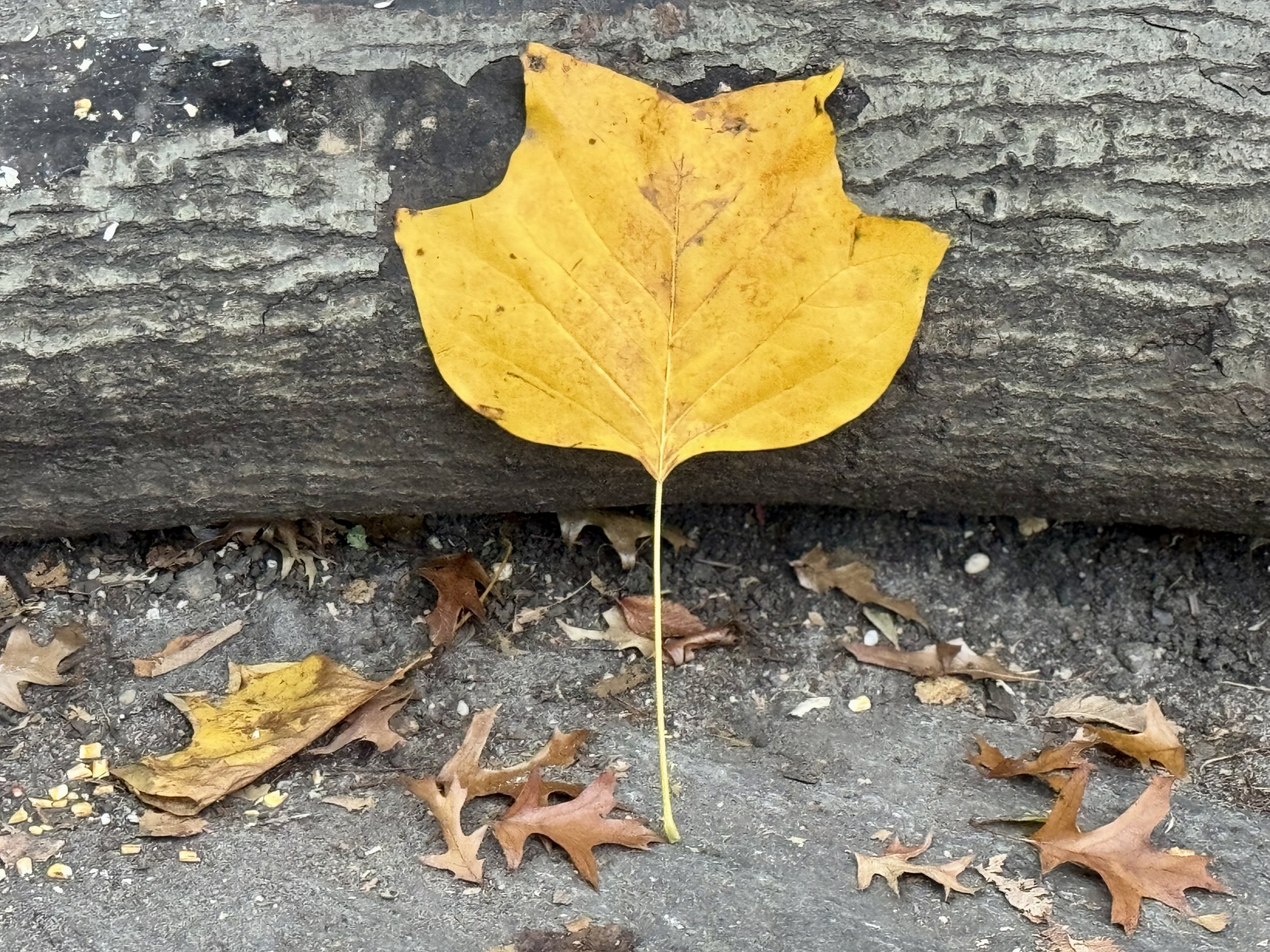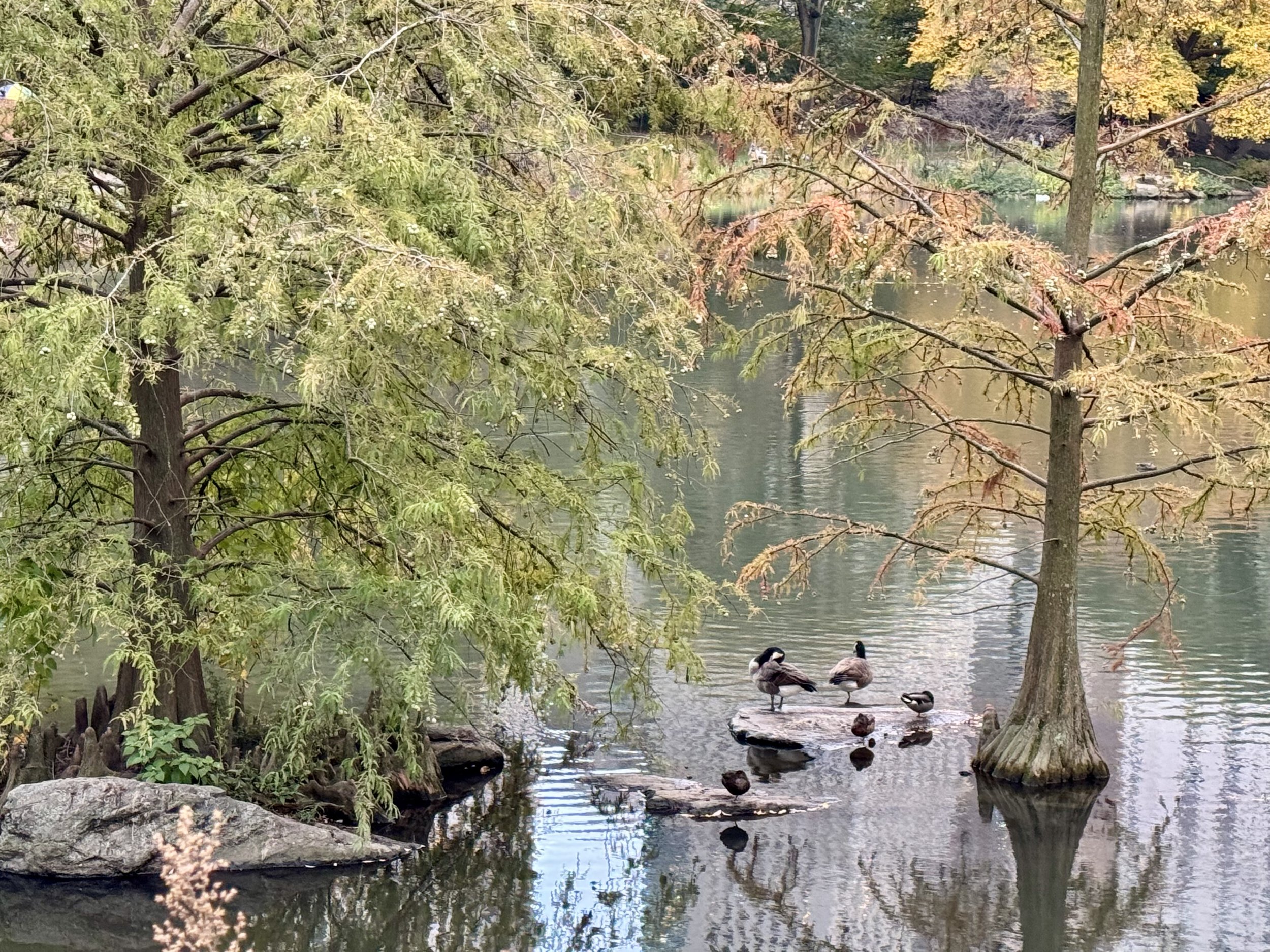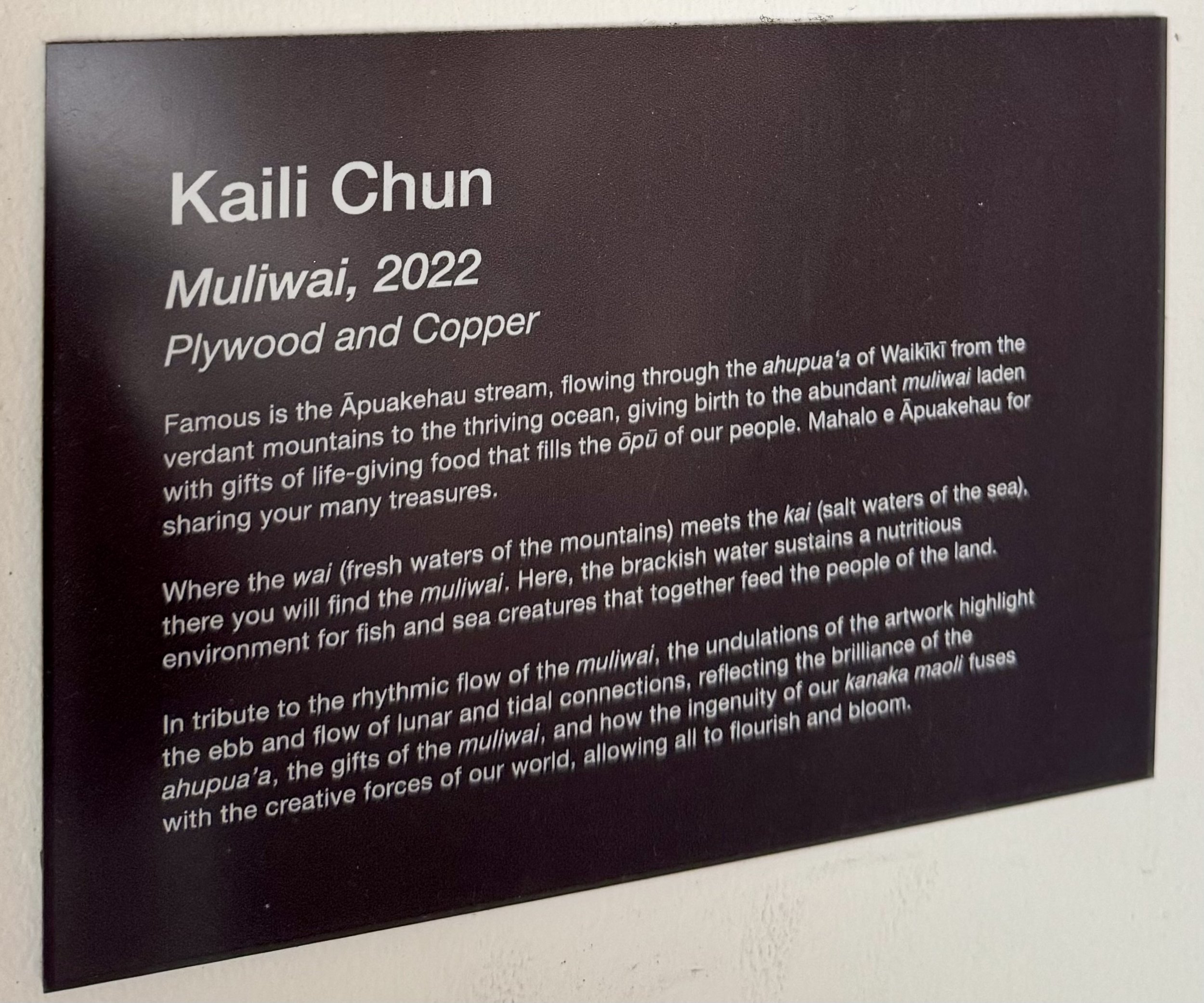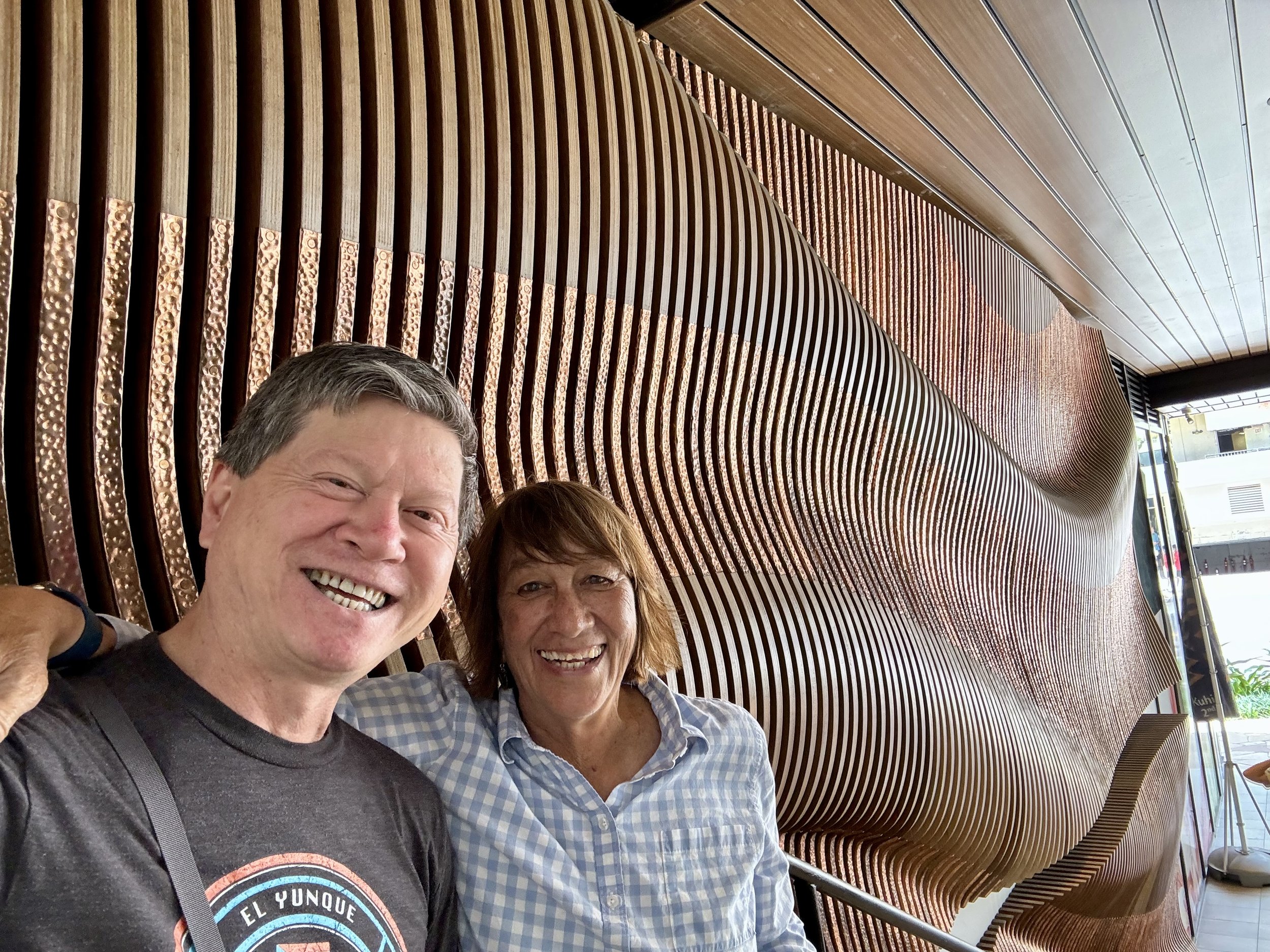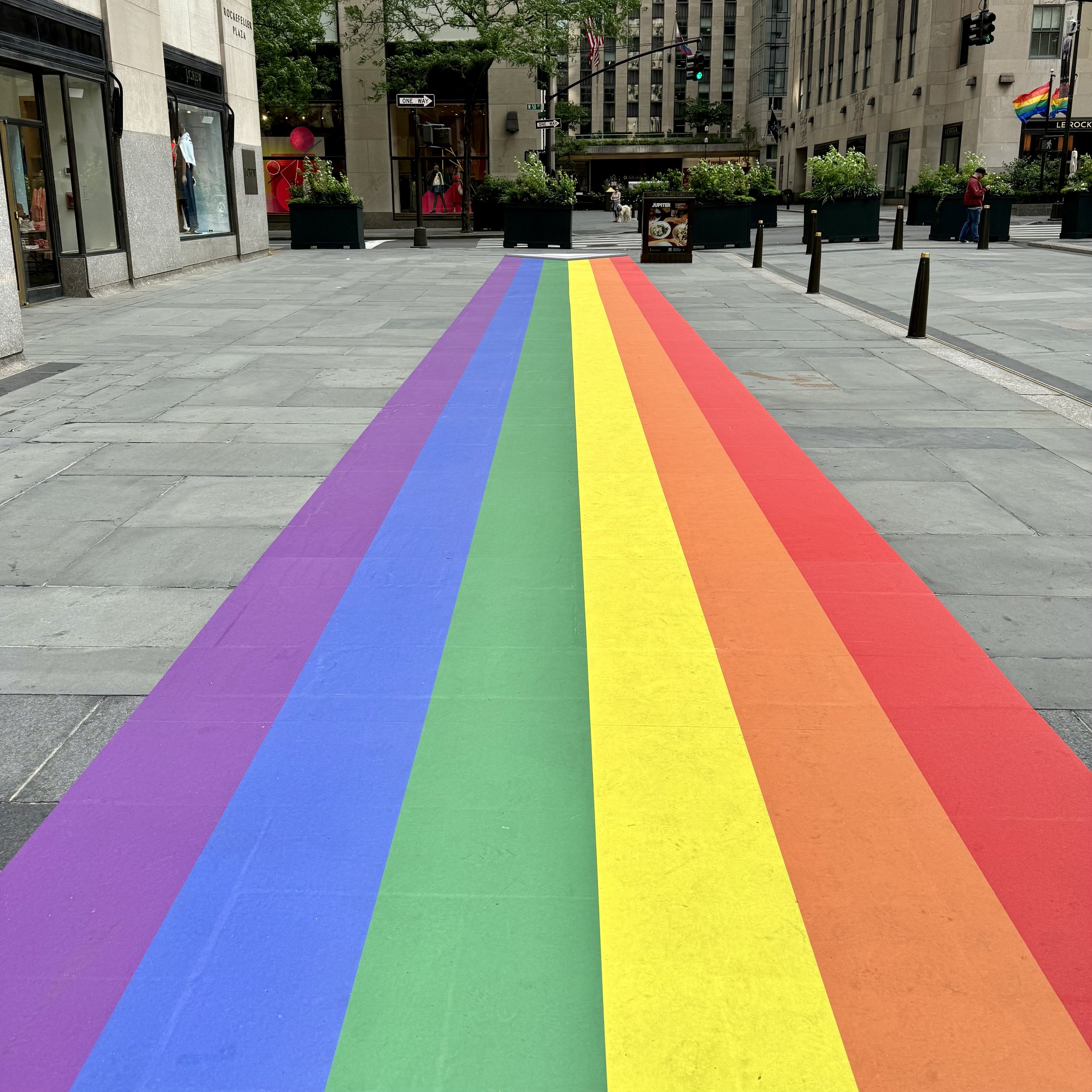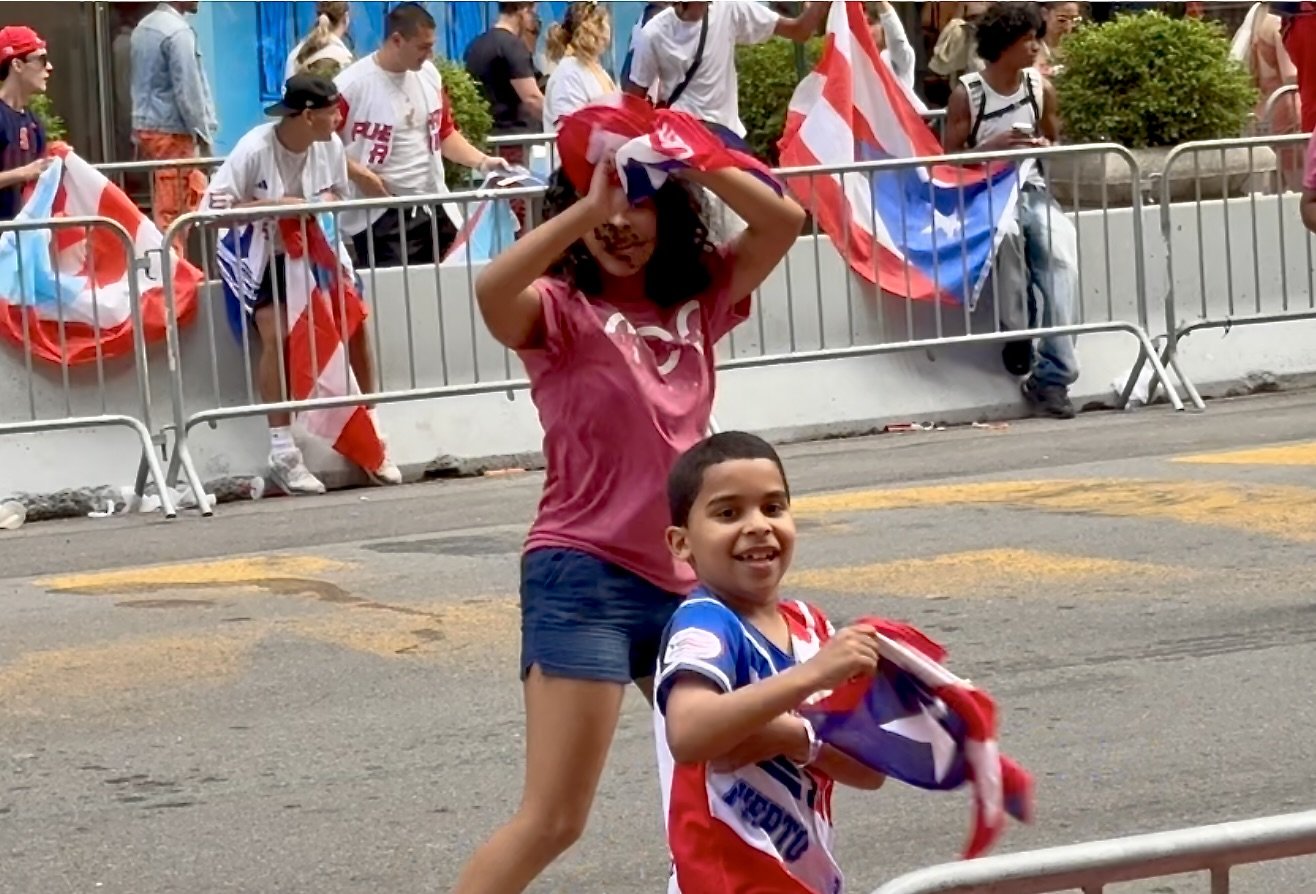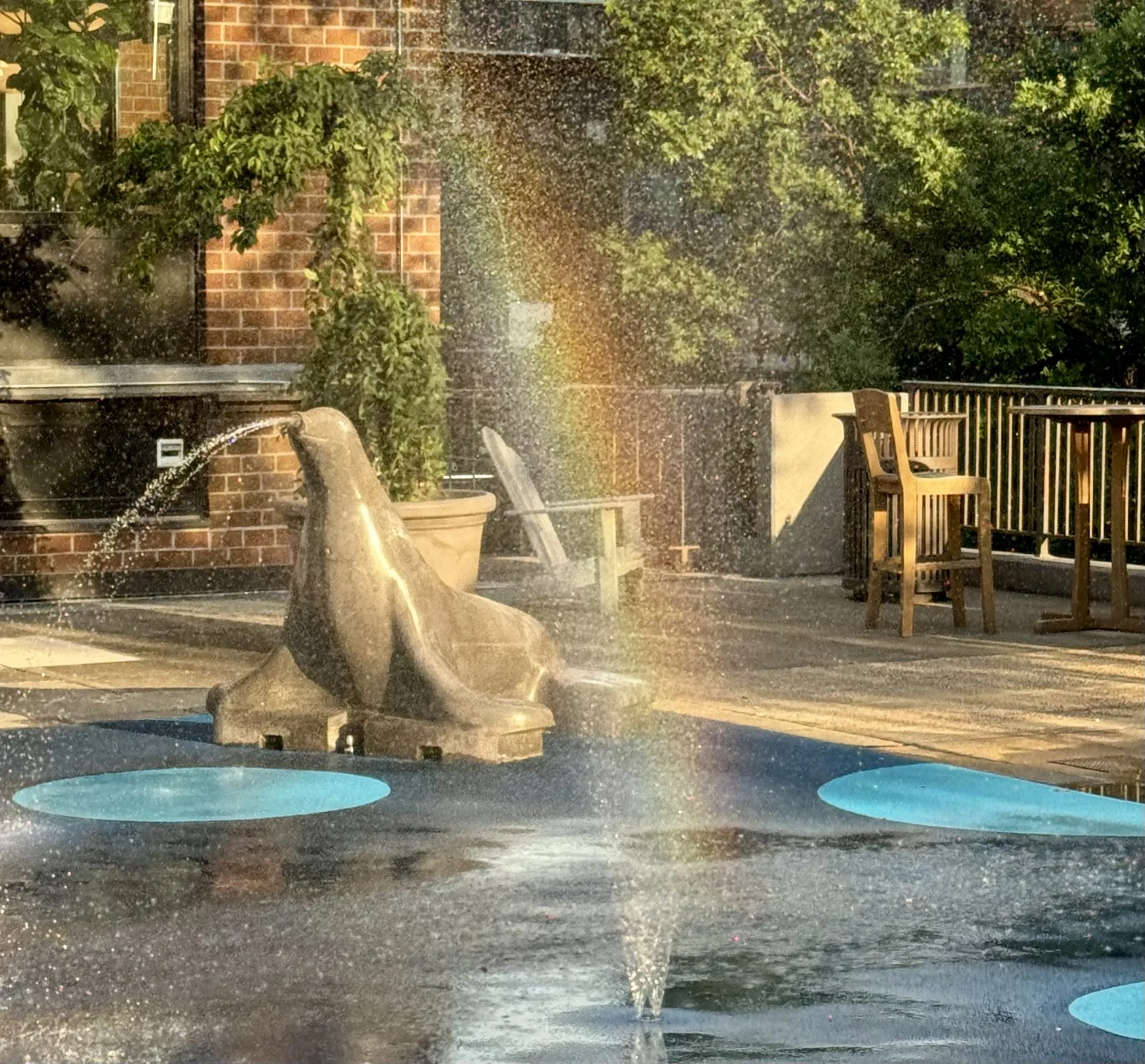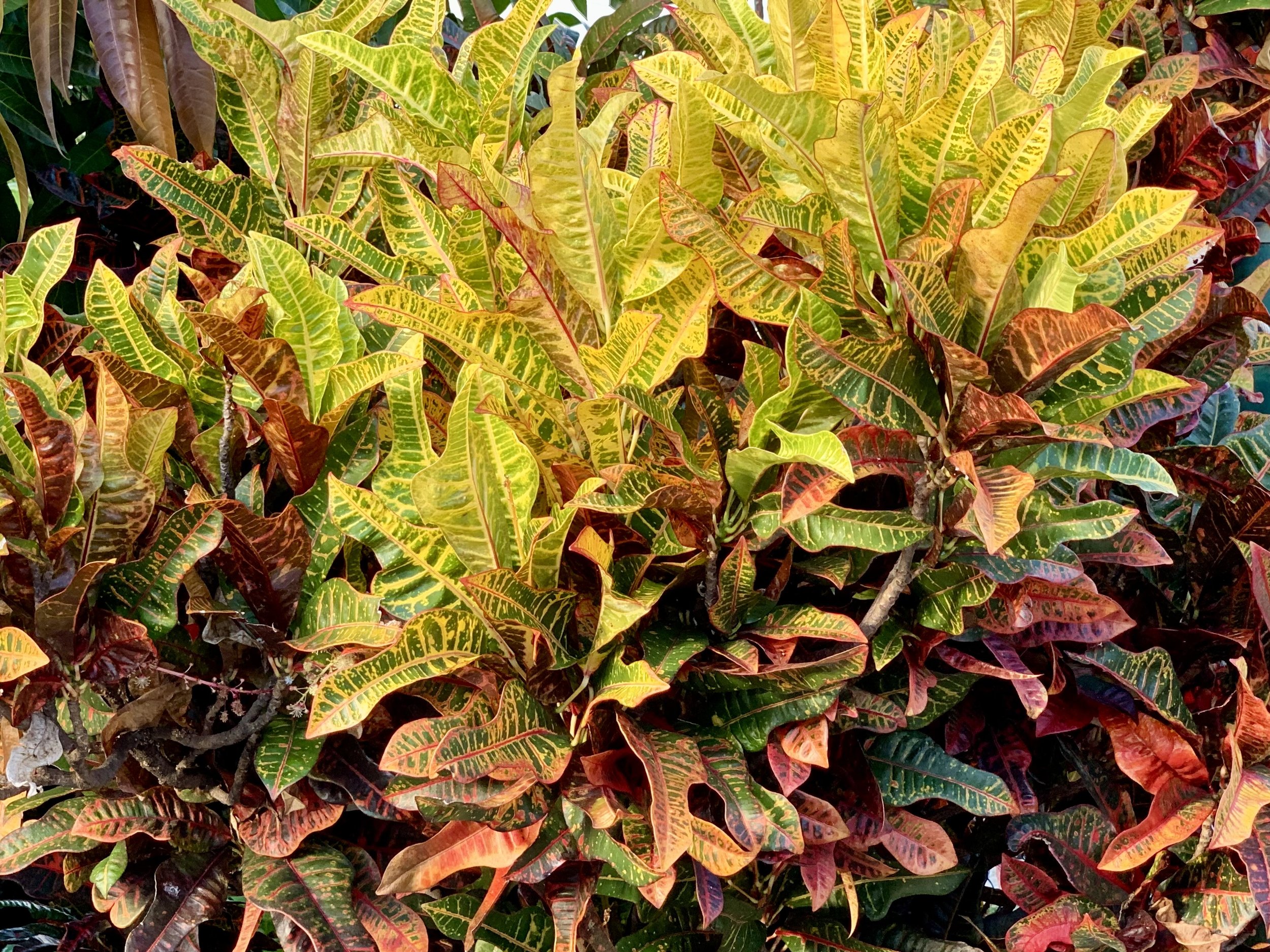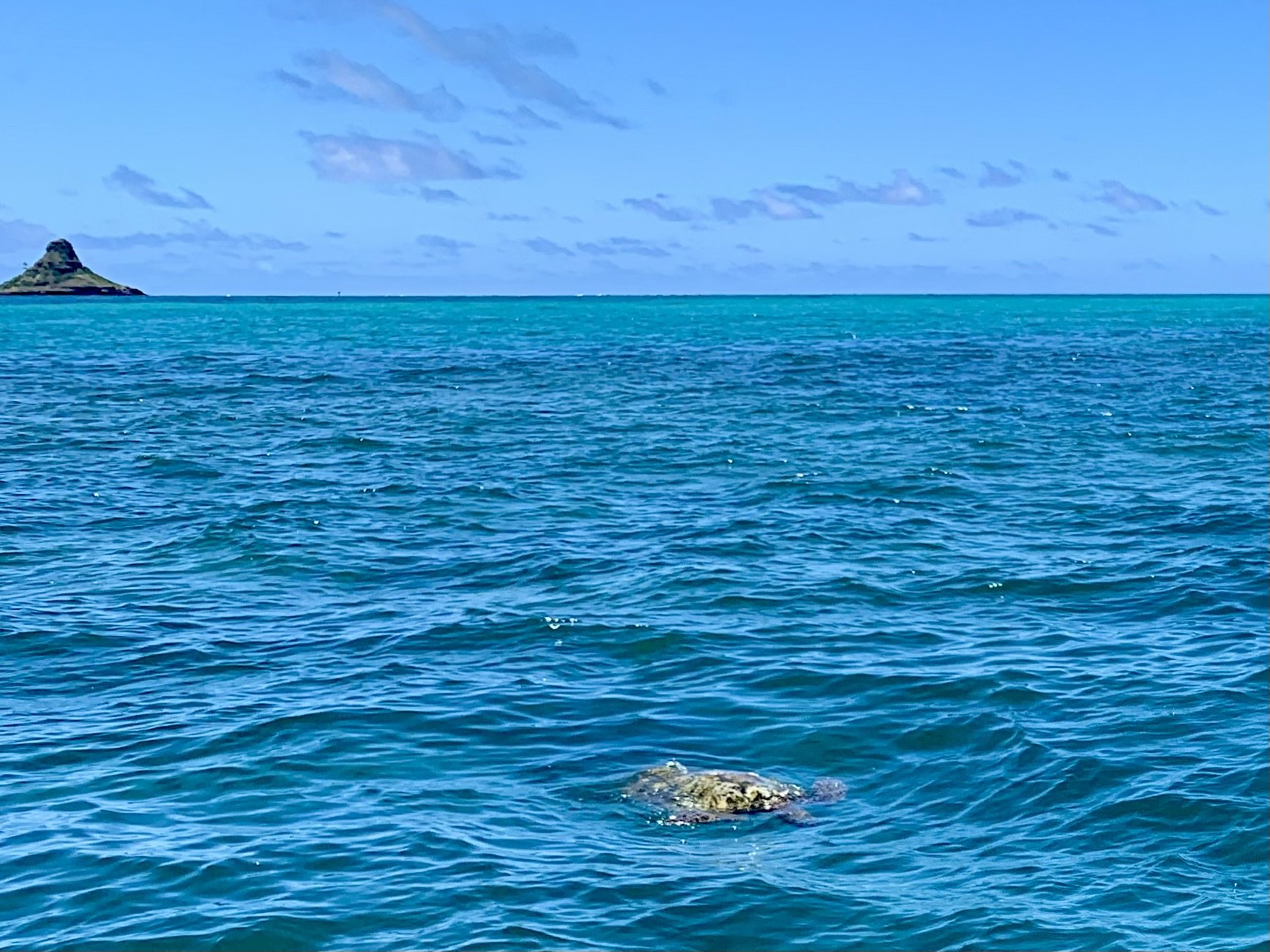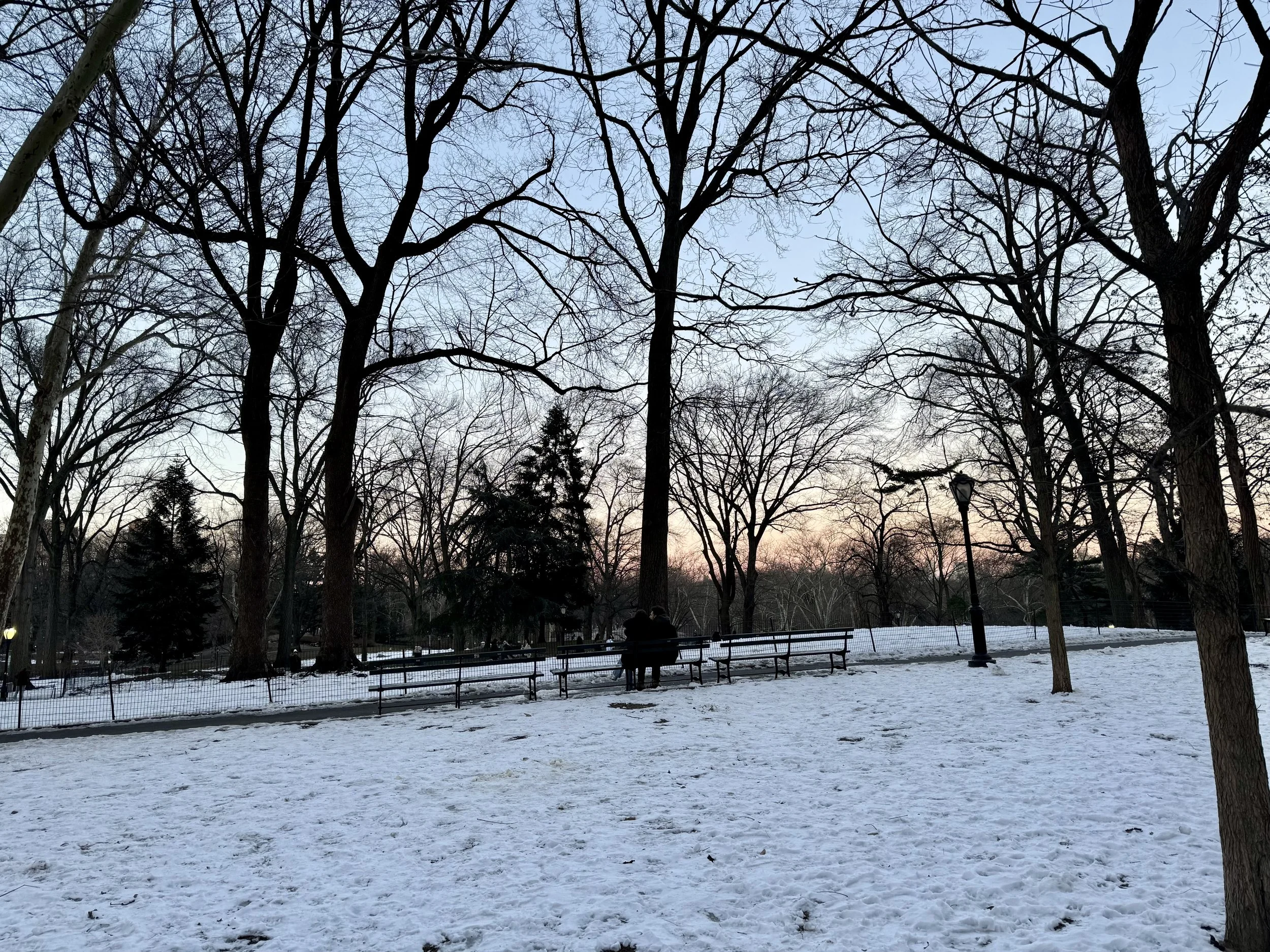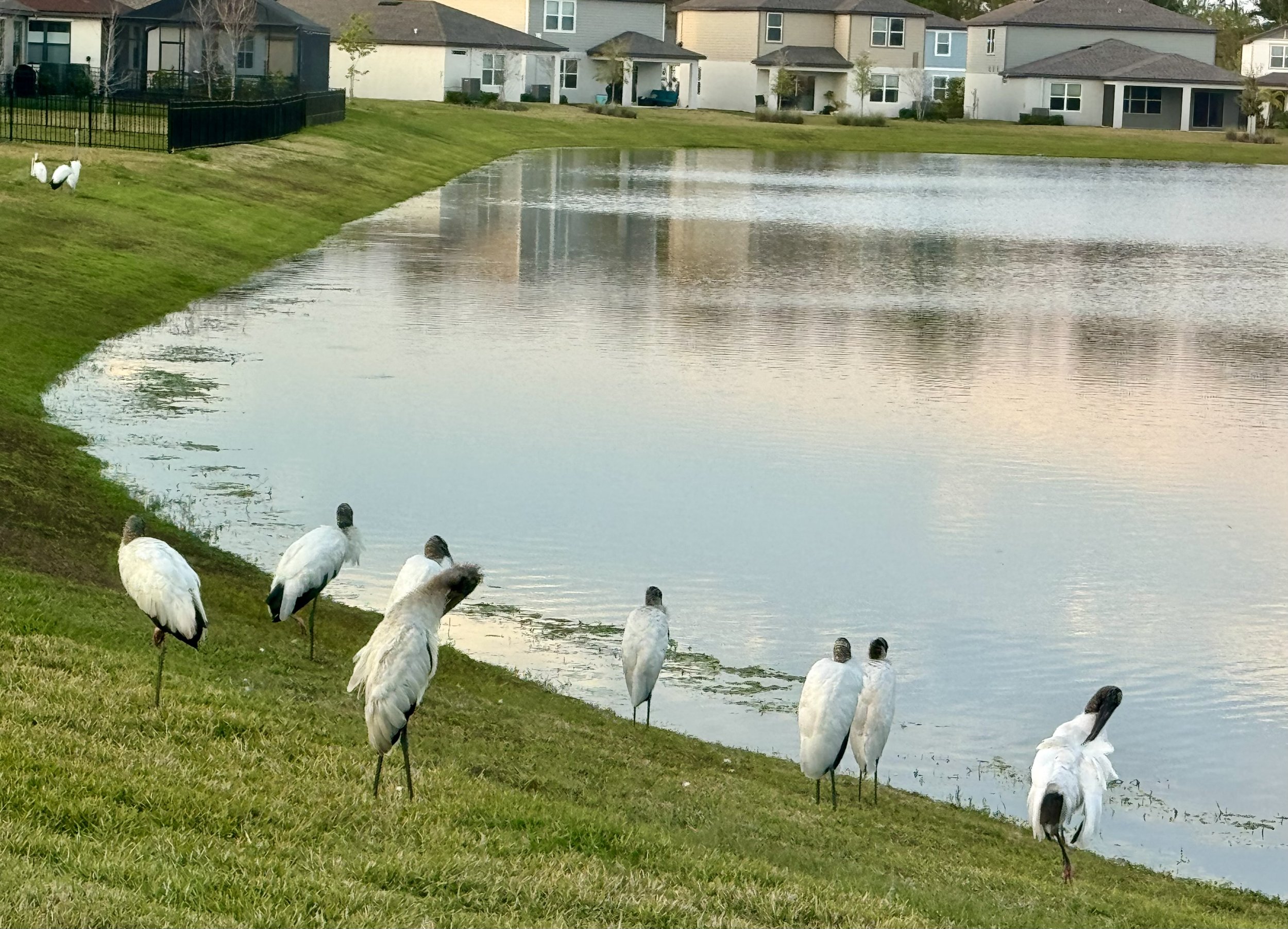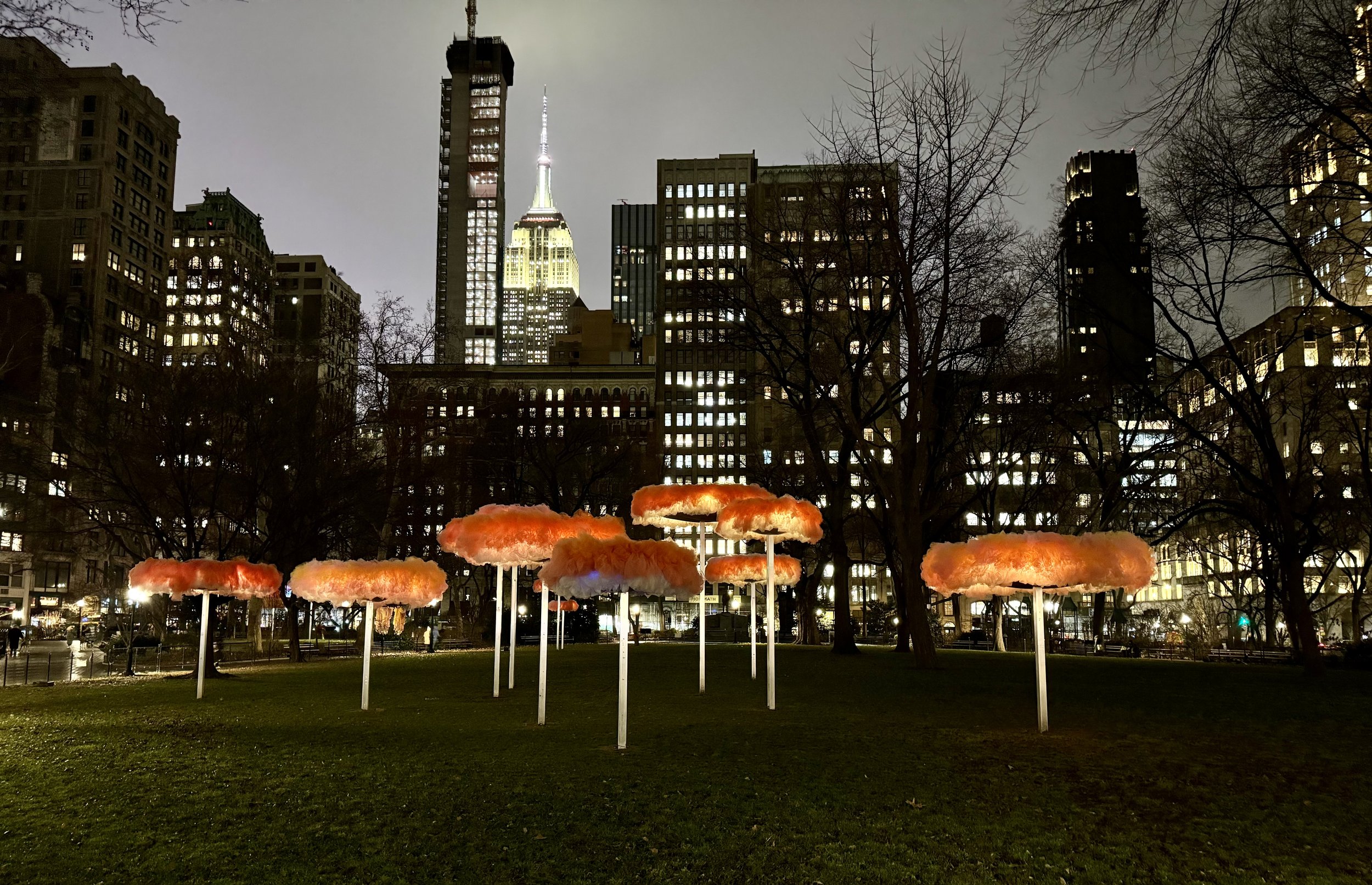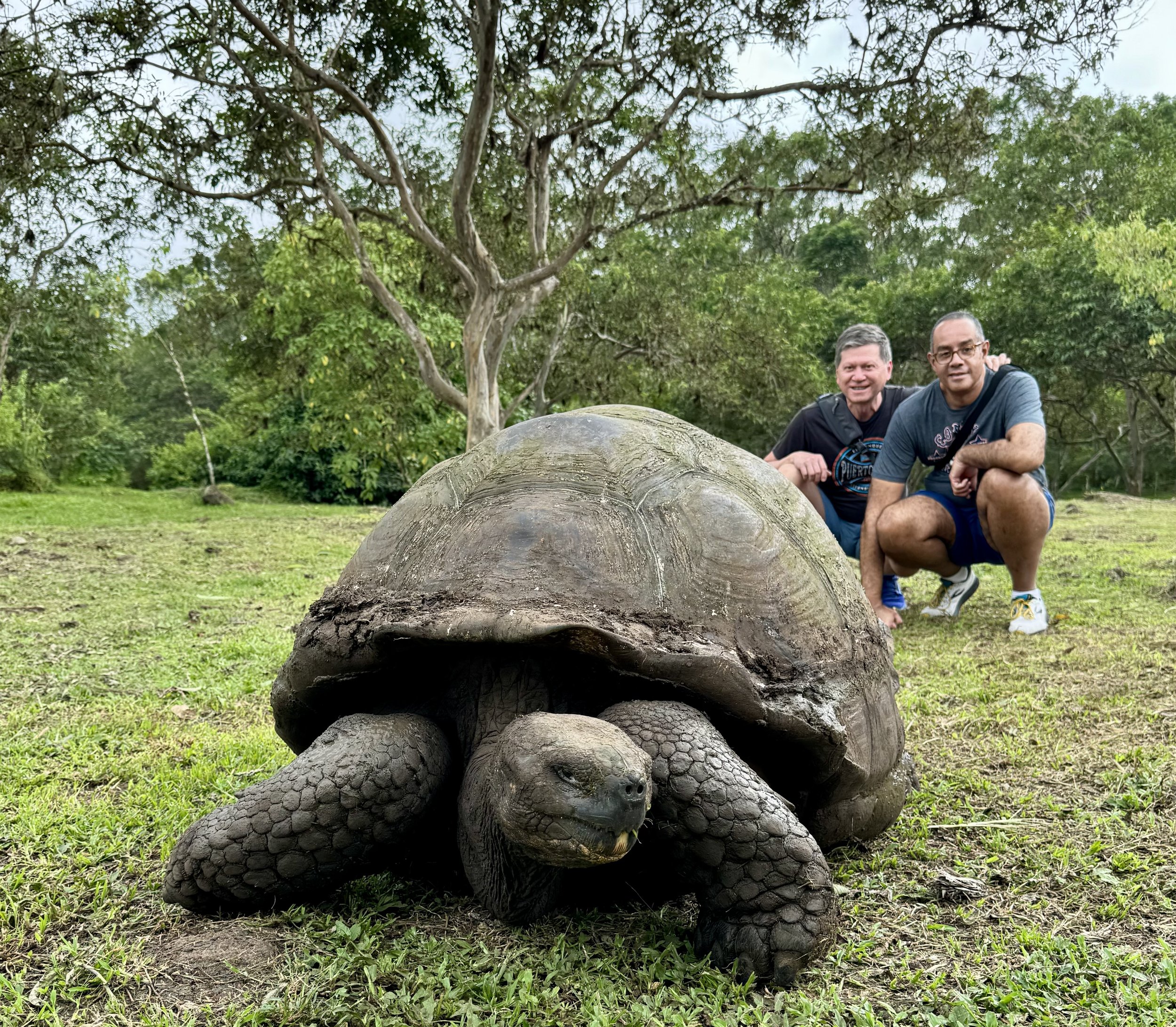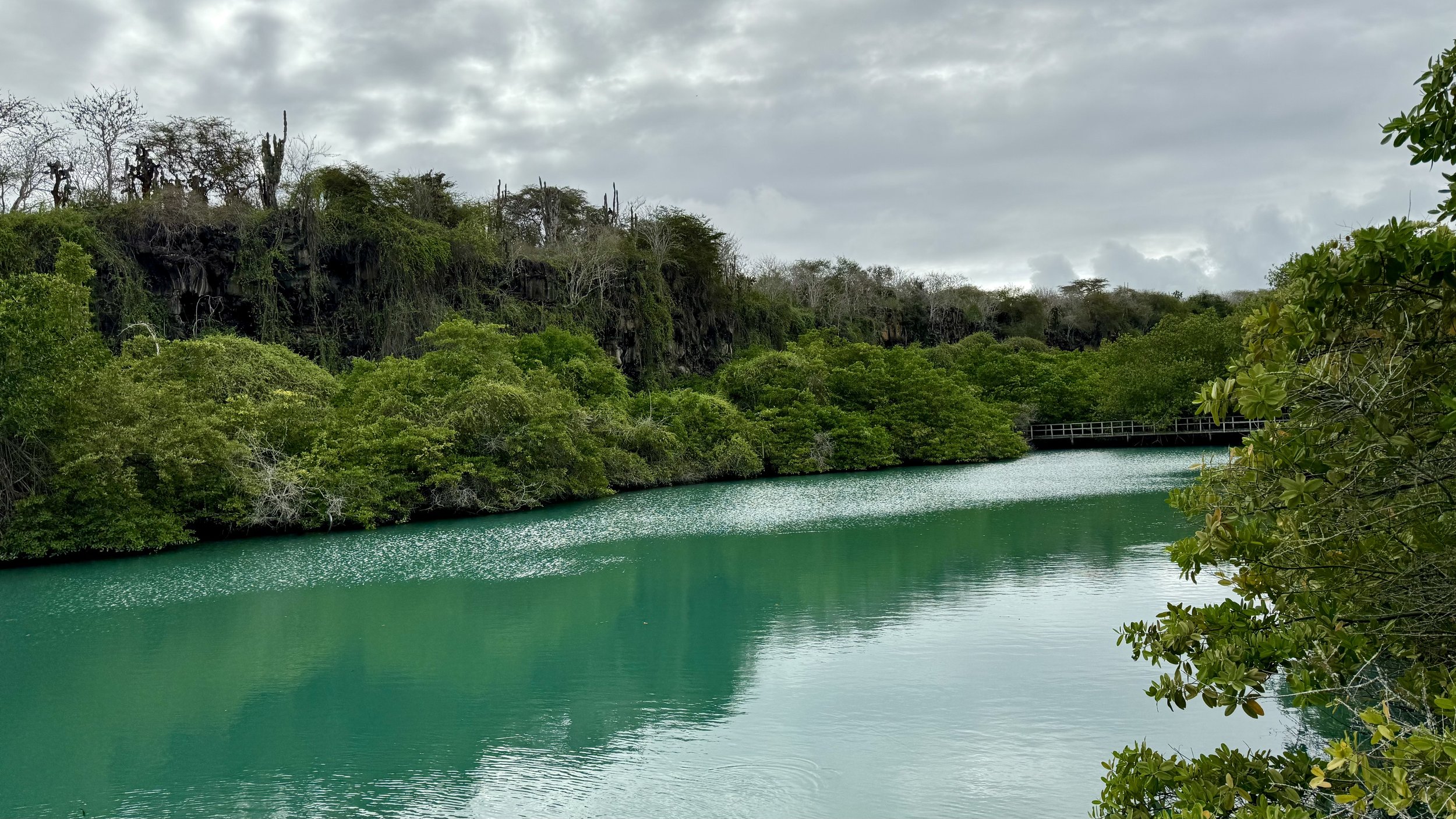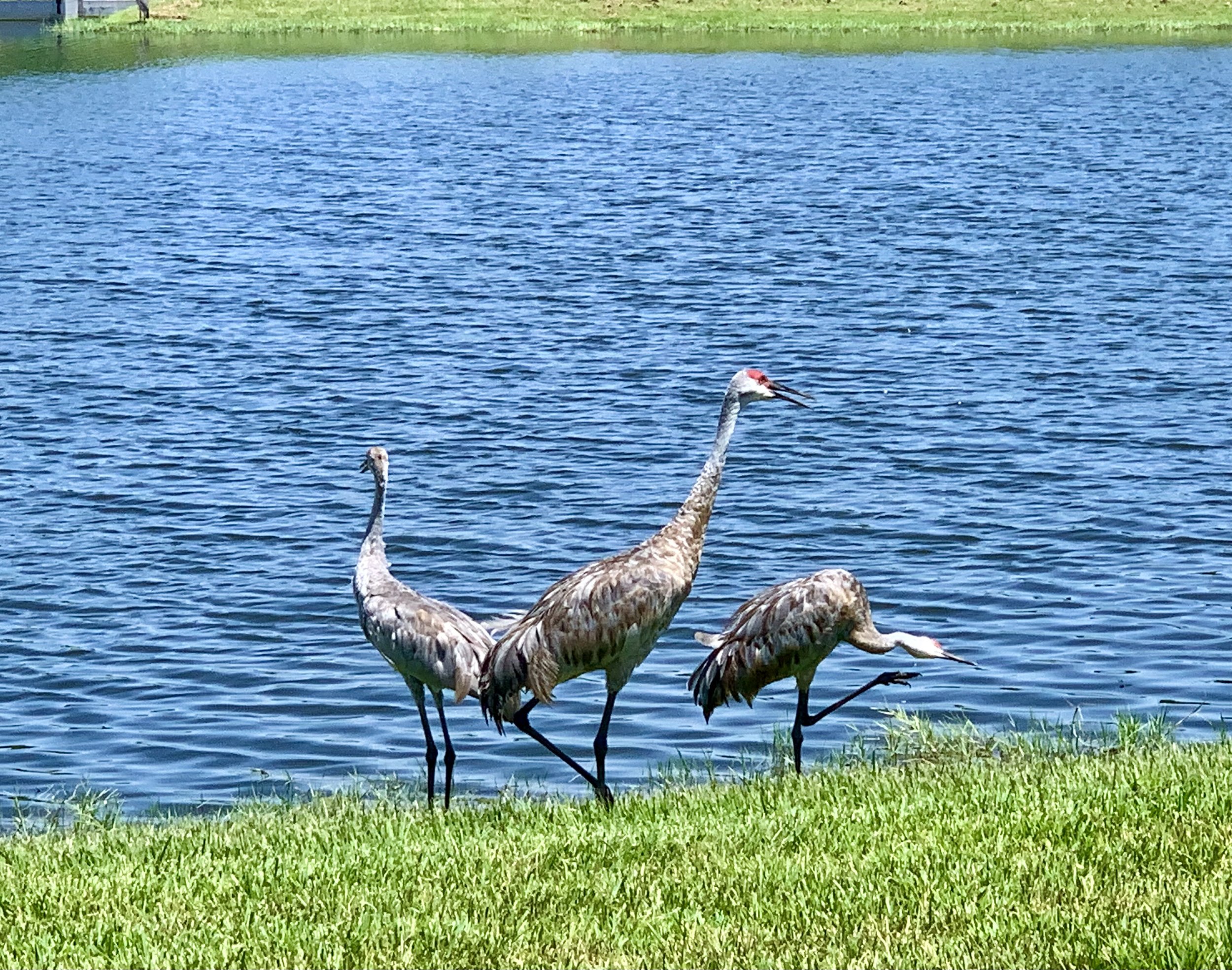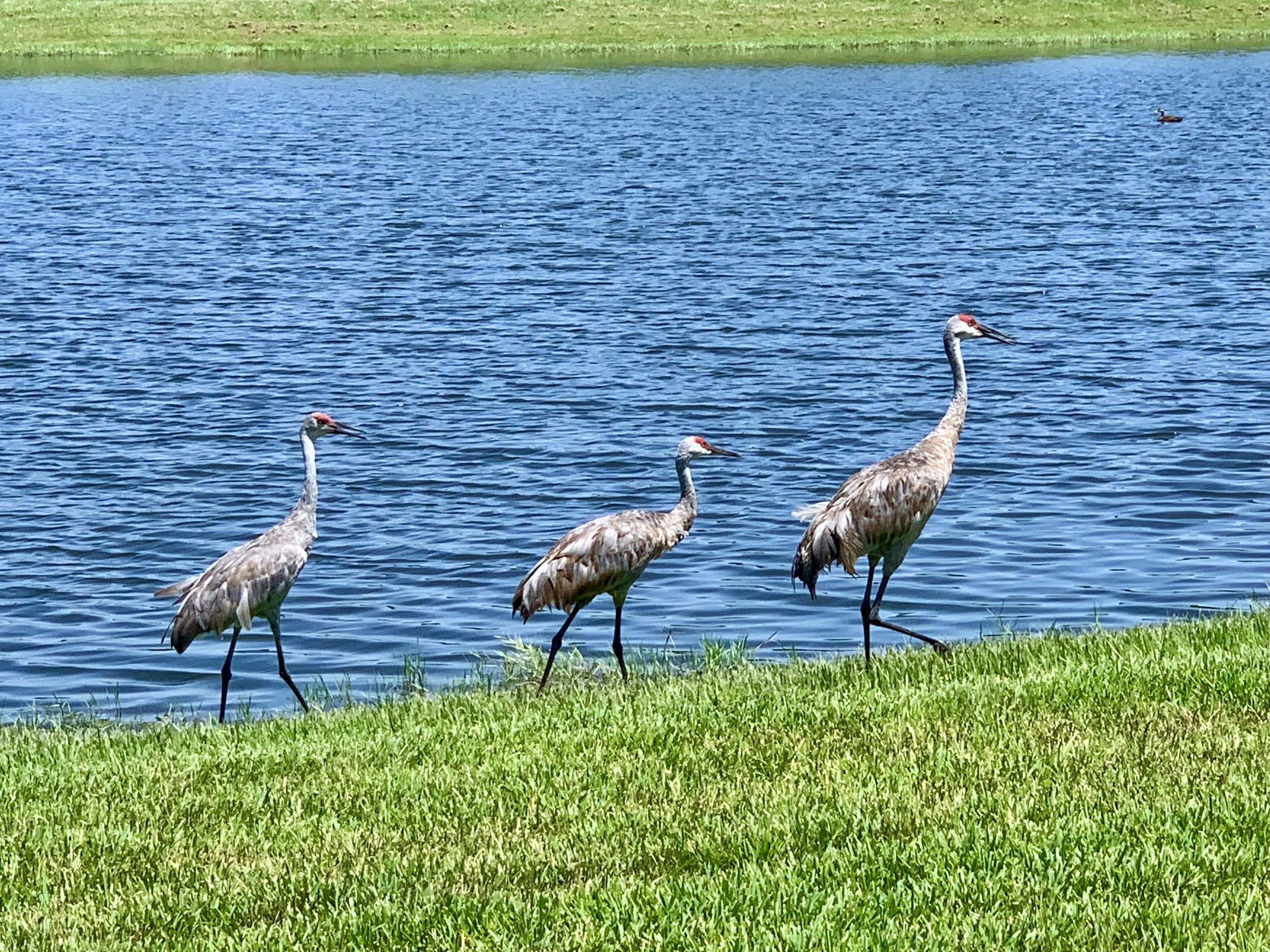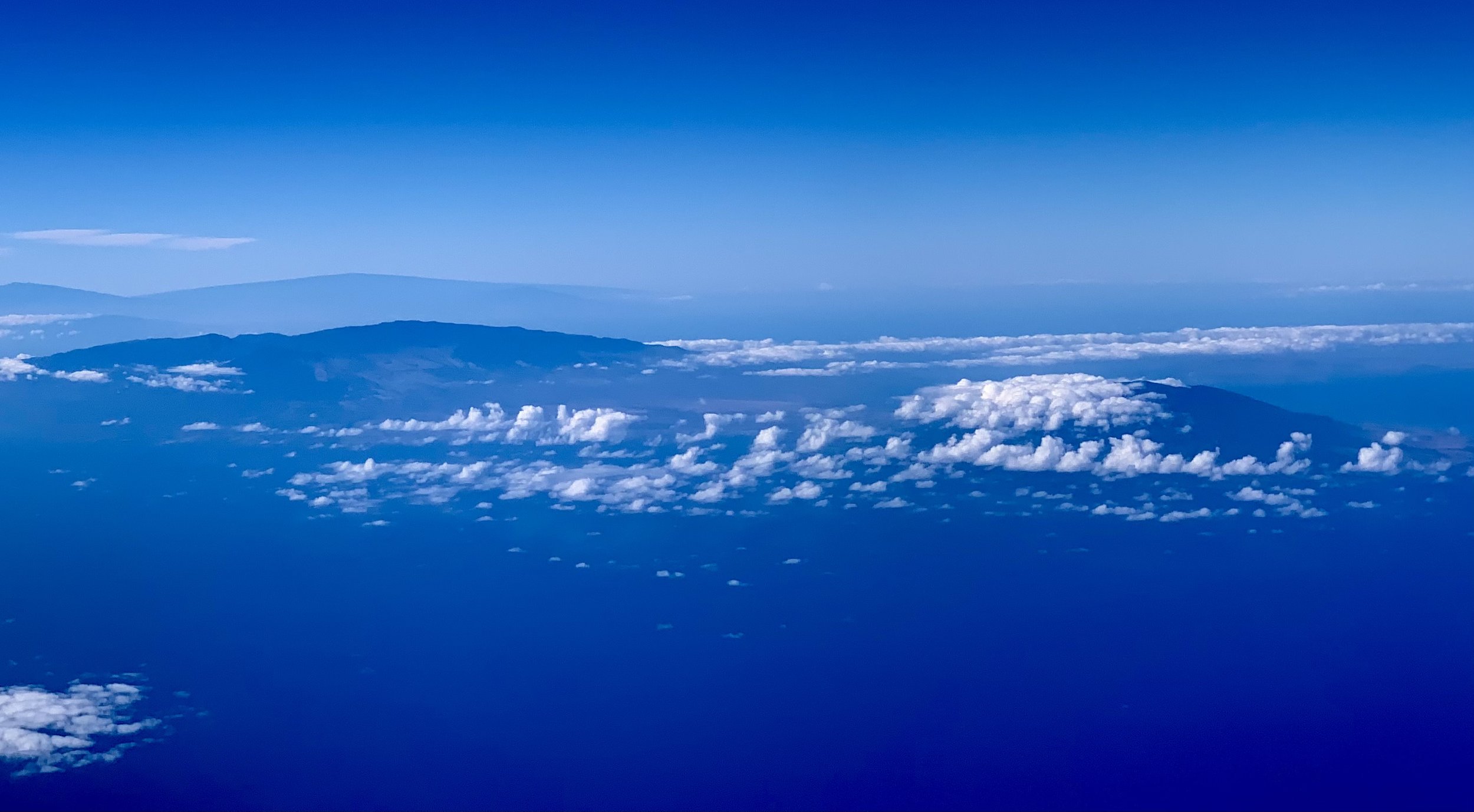Yoga and the Power of Love over hate
/FDNY Memorial Wall, Lower Manhattan, September 11, 2024
……………….
This month, I made a trek down to Lower Manhattan on 9/11. I try to go down there each year on this date, when I can. The searing images from 23 years ago of seeing the towers fall as I gazed out of my window in midtown will be with me for the rest of my life. Being down there earlier this month at those two sacred pools which are on the footprints of the twin towers helps me to not forget. Seeing the names of the victims etched into the walls around the pools helps me to remember that these were human beings, sentient beings like you and me. Watching the commemoration ceremony on TV and seeing family members read their names – always with much emotion in their voices – helps me to remember that the loss is still felt deeply by those closest. For me, it’s good to pause on this day, and reflect on how that day’s events can provide lessons for me as I try to live my best life for the rest of my life here on this Earth.
Pema Chödrön shared this story, The Wolf That Wins:
There was a story that was widely circulated a few days after the attacks of September 11, 2001, that illustrates our dilemma. A Native American grandfather was speaking to his grandson about violence and cruelty in the world and how it comes about. He said it was as if two wolves were fighting in his heart. One wolf was vengeful and angry, and the other wolf was understanding and kind. The young man asked his grandfather which wolf would win the fight in his heart. And the grandfather answered, “The one that wins will be the one I choose to feed.”
Clearly, we see many examples currently in the outer world that show the results of people choosing to feed the wolf of vengeance and anger. But as yogis, I think, the important task at hand is to move inward and try to feed our own inner wolves of understanding and kindness.
Having turned 65 this year and entering into my “re-wirement” years, I can slow down a bit. I’m not chasing money and fame like I was in the 1st and 2nd chapters of my life. When I’m out on the streets, most often I’m not rushing to get somewhere, but rather I can take my time. It's a luxury I wish all beings could have.
I know that when I am in a hurry and being impatient, that’s when I can easily succumb to feeding the wolf of anger and vengeance. An example of this in my personal life is that my neighborhood in midtown west Manhattan has become crowded and almost a bit dangerous in the last few years. The sidewalks are full of people – and often e-bikes, sadly. On the streets, cars are whizzing by and e-bikes (again) are often going in the wrong direction. You really have to look left and right before you cross the street. It’s gotten to the point that I don’t use my AirPods when I’m out and about so that I can have all my senses available to me to prevent possibly being hit. A few weeks back, I was in a hurry to get home and was making my way through a crosswalk on a green light signal when suddenly a car made a quick right turn through the crosswalk and nearly hit me. I remember in that moment wanting to feed the wolf of anger and vengeance, as that car nearly injured me. And I remember those feelings stayed with me for a few hours that night.
But here’s the point of my story – I looked inside myself to see what changes I could make so that I would less likely be in a position to want to feed the wolf of anger and vengeance when I’m out there in my little world surrounding me. The awareness that came over me was that I can start by accepting that there are people out there who, when triggered, will cause harm to others. That is their karma that they’ll have to account for it. But for me, I can slow down and move more mindfully through the world, and in so doing I can lessen my feelings of anger and resentment. Walking with more awareness and light I can put myself in a better frame of mind to be able to feed the wolf of understanding and kindness, even as I’m traversing nearby busy Times Square, which some might say is the center of the Universe.
The Buddha’s core ethical teachings were compiled thousands of years ago into a text called the Dhammapada. At this time of year, I always like going back to it to reflect on these particular verses:
"Hatred is never ended by hatred - but by love [this is an eternal rule]"
Dhammapada verse 5
and
Many forget that we here must die,
For those who remember, quarrels end.
Dhammapada verse 6
For me, with each passing year and at this chapter of my life, it becomes much easier to remember that I won’t be around forever and ever. I certainly can’t make any promises to myself or anyone else that in my remaining lifetime all my quarrels will end. But I do often contemplate the need to come to peace with any quarrels within myself. At this point, I look back and think of the mistakes I’ve made, mistakes that were made out of the ignorance of youth, so to speak. Mistakes made while pursuing fame and fortune in my earlier years. And the sheer recognition of those mistakes makes it easier to understand how others can make similar kinds of mistakes. As spiritual beings, we’re all just trying to make some sense of what it means to have a human incarnation. It can either become a trap or be a springboard to more authentic joy and happiness – and humility.
Love evokes for me feelings of light, kindness, and understanding. It’s an ever upward spiral. Hatred evokes feelings of heaviness, anger, and vengeance. It’s a downward spiral.
I realize that you yourself may be in an earlier chapter of your life than I am, and may not have the luxury of time that I have. If I could share my sense of ease with you, I would. At the same time, I wish more than anything for you that you can carve out moments of mindful and expansive awareness in your life. And I hope that these moments can evoke feelings of love for all beings that will help to obliterate some of the hatred that is out there.
In your yoga asana practice, please do remember to feed the wolf of understanding and kindness for your body and its limitations. If you do, you will surely be closer on your way towards Enlightenment.
Finally, I invite you to listen to this very moving song called Dear Hate. I have a feeling it will make love grow within you and spiral you higher and higher.
May you be happy, …
May you be healthy, …
May you feed your wolf of understanding and kindness, ...
May your Love grow to become a powerful force, …
May your Love conquer hate, … both for your benefit and for the benefit of All Beings Everywhere.
Aloha and Metta,
Paul Keoni Chun
Light rising above darkness at one of the 9/11 Memorial Pools. Simply put - Love wins.
Almost full moon illuminated the midtown Manhattan skyline on September 16th. For me, it felt like a sign that even amidst all the darkness, there is still hope. Simply put - Love will find a way to pierce through.
Yoga and the Power of Joy
/On Sanibel Island this month, watching the birds fishing for food in the morning brought me great Joy!
……………….
Joy seems to be the word-of-the-month! Without getting political 😊, I think it’s important for each of us to cultivate joy. Why? Because it can give us a sense of much needed direction in our lives.
I shared this story in one of my past yoga e-Letters, but many years ago when I did Julia Cameron’s the Artist’s Way, one exercise asked the question: if you didn’t have to do it perfectly, what would you risk doing? For me, the answer was teaching (gymnastics at the time), and it eventually led me to teaching yoga.
What led me to doing the Artist’s Way in the first place was that I had just left an acting program because it was bringing me no joy whatsoever. In fact, it was a painful experience. Subsequently, in my search for a new acting teacher and program, I came across an acting teacher named Robert McCaskill. I’ll never forget the quote at the top of his page that described his approach:
“Joy is the Center of the Creative process.”
It has stayed with me ever since. Whatever I pursue, I try to find the joy. And I’ve also come to see that if something is not bringing me joy, then it’s time to move on. Mind you, I’m not talking about the “serial-interest path” whereby one pursues something until one gets bored then moves on to something else. (Sadly, this is all too common in our society.) Rather, I’m talking about the pursuits that brings so much joy ultimately that one is willing to push through the mud and do all the things necessary to feel like a success. For me at various times in my life the list has included doing gymnastics, dancing, acting, teaching, and founding a nonprofit. Each of these pursuits – hard as each has been at times – has also brought me great joy, the kind that no one can take away from me.
We know that there is much happening in the world that is creating the opposite of joy. They include: wars, famine, violent political rhetoric, and greed wreaking havoc on the planet, to name a few things. Things like this must have been happening even in the time of the Buddha, because at the end of a yoga class I took 20+ years ago, the teacher left us with a quote from the Buddha, who taught:
“Learn to live Joyfully through all the world’s sorrows.”
But how you might ask could we possibly do this? The American Buddhist Monk, Pema Chödrön may have the answer. She said:
“Times are difficult globally; awakening is no longer a luxury or an ideal. It’s becoming critical. The earth seems to be beseeching us to connect with joy and discover our innermost essence. This is the best way we can benefit others.”
To me she is saying that it is essential that each of us finds things that spark so much Joy within ourselves that we we’re willing to make “blood, sweat and tear” sacrifices in order to pursue these things further. It’s essential that we find activities that when we’re engaged in doing them time seems to stand still.
Joy’s power is that it points us in the right direction. Joy’s power is that it motivates us. Joy’s power is that it is contagious. Joy’s power is that it makes it easier for us to find common ground with people who see things differently than we do.
Perhaps if more of us experienced the elixir of joy more often, the world might truly be in a better place. We’d lower our guards more often, be less competitive and greedy, and share more of what we have with others. Perhaps more than ever before in history, we have to become beacons of Joy in order to not only save ourselves, but also the entire planet.
As you practice yoga asanas, consider fanning the flame of joy with each breath you take. Find the joy – rather than the suffering – in each asana (posture) you perform.
I leave you with this poem from Rumi which captured my joy:
"‘This is love: to fly toward a secret sky, to cause a hundred veils to fall each moment. First to let go of life. Finally, to take a step without feet."
This makes me remember a moment back in college at Stanford University many years ago when I was in rehearsal for a musical with Ram’s Head Theatrical Society, a student run theatre organization. I distinctly remember doing a Grand Jeté (split leap) across the stage of Memorial Auditorium. And in that moment, I just knew that I had to dance. I leapt so high I remember feeling like I was never going to come back down to Earth. It was such a seminal moment for me that it did eventually lead me to pursuing a career in dance.
So, similarly for you, I hope that in whatever pursuits you are engaged in at this time that you are flying toward your own secret sky and that veils are falling all around you, like they did for me. And like I experienced in that moment 43+ years ago, I hope you are floating on air as you are pursuing what you love doing.
May you be happy, …
May you be healthy, …
May you be creating with much Joy at this time, ...
May your Joy be powerful, …
May your Joy be alleviating some of the sorrows of the world, … both for your benefit and for the benefit of All Beings Everywhere.
Aloha and Metta,
Paul Keoni Chun
……………….
These are some sights from this past month that brought me great joy upon witnessing them!
At sunrise, the early bird gets the fish ... or in my husband's case, the best pick of the shells that washed up on the beach overnight.
Dive-bombing for breakfast!
A few treasures found on Sanibel from my husband's impressive shell collection! Learn more about shelling on Sanibel Island here.
Yoga and the Importance of Balance
/This past month, I returned to Hawaii to celebrate a milestone birthday for my oldest brother. Coming back home gave me a chance to create some balance in my life as I reconnected with my family and bathed in the natural beauty of this island paradise in ways that touched all my senses. It reminded me that creating feelings of balance in one’s life is so very important.
I got to visit with my cousin, Kaili, who is a well-respected Native Hawaiian sculptor and installation artist based in Hawaii. She gave me a personal tour of some of her art pieces in Waikīkī, downtown Honolulu, and in her own studio in Nuʻuanu. Particularly, her piece Muliwai caught my attention. She explained to me that in ʻŌlelo Hawaiʻi (Hawaiian Language), Muliwai is the place where the fresh water from the mountains meets the salt water from the sea, and creates the proper conditions for a certain fish called the Hinana (baby ‘o’opu) to thrive. She said that the Hinana were one of many fish that Hawaiians ate to sustain themselves. According to my cousin, “we [Hawaiians] knew and still know their lifecycles and know when to harvest [them] and when to let [them] grow.” In other words, Hawaiians didnʻt over-harvest. Rather, they balanced the “taking from Nature” with periods of letting nature replenish itself. In this way, they could live in harmony and balance with nature and thus experience harmony and balance within themselves. As we say in Hawaii, “so akamai!” – so smart!
In the installation’s description above, it says:
“Where the wai (fresh waters of the mountains) meets the kai (salt waters of the sea), there you will find the muliwai, Here, the brackish water sustains a nutritious environment for fish and sea creatures that together feed the people of the land.”
In addition to meaning “slightly salty,” another definition of brackish is “unpleasant or distasteful.” And that got me thinking about life itself. What are the necessary life experiences one needs in order to live a full and meaningful life? I would argue that we need to experience both the refreshing parts of life as well as the salty parts of life. The balance of the two will help us to keep moving in the direction of Enlightenment, which is what we’re trying to achieve in our yoga practice both on and off the mat. From a yoga perspective, we need a balance of stimuli – both the light and the dark, the easy and not so easy – in order to create the right conditions for us to reach Enlightenment.
The installation description also states:
“In tribute to the rhythmic flow of the muliwai, the undulations of the artwork highlight the ebb and flow of lunar and tidal connections, reflecting the brilliance of the ahupuaʻa, the gifts of the muliwai, and how the ingenuity of our kanaka maoli fuses with the creative forces of our world, allowing all to flourish and bloom.”
The key takeaway for me as it relates to yoga is that the Hawaiian people (kanaka maoli) flourished and bloomed because they were able to ebb and flow with nature rather than against it. And the lesson for us is that we can ebb and flow with things just as they are, rather than constantly fighting to have things be something different than they are.
At the moment, I am working my way through a course on Equanimity given by the Buddhist Meditation Teacher, Sharon Salzburg. In the first lesson she offers these words:
Equanimity is engaging with life with perspective and wisdom.
and
Equanimity’s strength derives from a combination of understanding and trust in the cycles and tides of our life’s experiences.
The Hawaiian people surely understood this in ways that we can learn from. There is a rhythm to life, and our job is to try to stay in the flow, swim with the flow, and not to try to resist the flow, especially when it leads us into brackish waters. Because that is where we may truly find the life-nutrients we need to help us move forward spiritually. That is where we may gain more perspective and wisdom.
No less important as a practice, the installation description starts with these words:
“Famous is the Āpuakehau stream, flowing through the ahupuaʻa of Waikīkī from the verdant mountains to the thriving ocean, giving birth to the abundant muliwai laden with gifts of life-giving food that fills the ʻopu of our people. Mahalo e Āpuakehau for sharing your many treasures.”
The Hawaiian people knew the importance of saying Mahalo (thanks) to Nature for its gifts that filled their ʻopu (stomachs) to samtosha (contentment). So I will conclude here by saying that our practice of cultivating balance in our own lives needs to include slowing down at times and observing the non-man-made things around us. Cultivate balance by pausing and giving praise to the beauty around you that is always being given to you freely by the Universe .
May you be happy, …
May you be healthy, …
May you flow with Nature, ...
May you be like the Hinana and thrive in the brackish waters of your life, …
May you practice balance in your life, … both for your benefit and for the benefit of All Beings Everywhere.
Aloha and Metta,
Paul Keoni Chun
Mahalo - thanks! - to Nature for giving us such beauty!
Me and Cuzin Kaili.
Yoga and the Power of Pride
/Rockefeller Center Plaza all decked out for Pride!
……………….
In yoga and Buddhism, pride can have negative connotations. It’s often associated with having a high sense of self-importance and too great of an ego, both of which we’re instructed to try to lessen through our practice. But Pride can also have positive effects on our practice as well.
This month, we celebrated LGBTQI+ Pride month. The lesson for all of us is that we can come out to our very own authenticity.
Back when I was a dancer, I heard this quote from Martha Graham, the iconic 20th century Dancer and Choreographer, which had a profound impact on me:
There is a vitality, an energy, a life-force that is translated through you into action, and because there is only one of you in all of time, this expression is unique. And if you block it, it will never exist through any other medium and will be lost.
As a dancer, I remember always comparing myself to others. And I also remember how the music made ME feel and what joy it brought ME expressing it through movement. I felt that vitality, energy, and life-force that Marth spoke of. And Martha’s statement made me realize that no one is going to express that movement like I can, and that is to be celebrated from within.
And as a yoga teacher, I’ve kept coming back to my inner voice when it comes to choreographing my yoga sequences. That voice has guided me, and over time, I’ve learned to trust it with more and more confidence.
The yogic lesson I’ve gained is that no one can express any particular yoga pose like I can. And no one can teach a yoga class like I can. Both are unique to me, and both deserve to be celebrated.
Marianne Williamson wrote the following which also had a profound impact on me back in the 90s:
Our deepest fear is not that we are inadequate. Our deepest fear is that we are powerful beyond measure. It is our light, not our darkness, that most frightens us. We ask ourselves, who am I to be brilliant, gorgeous, talented, fabulous? Actually, who are you not to be? You are a child of God. Your playing small doesn't serve the world. There is nothing enlightened about shrinking so that other people won't feel insecure around you. We are all meant to shine, as children do. We were born to manifest the glory of God that is within us. It's not in just some of us; it's in everyone. And as we let our own light shine, we unconsciously give other people permission to do the same. As we are liberated from our own fear, our presence automatically liberates others.
Marianne Williamson - A Return to Love, 1992
From a yoga perspective, I say “Amen to that!” Yoga practice isn’t meant to serve only the privileged few, the ones who can easily touch their toes or stand on their heads. As yogis, we were all born with that ability to manifest the glory of God within us through our yoga practice. It is important not to block our fullest expressions of ourselves in our practice. No one can express downward dog or warrior 1 quite like you or I can. And that is something we can take pride in. Especially since this is the kind of Pride that allows us to let our own Light shine, which then, as Marianne says, gives others the permission to do the same.
I don’t know who said this, but it resonated with me:
We are all being called upon – each in our own unique way – to find out who we are, and to live that authentically in the service of this world, not just for our own particular small-minded gain or benefit.
- author unknown
Each of us must find our own unique voice. And as we do, we can proudly share it with the world and in taking pride in who and what we uniquely are, we can be of service to the world.
After all, isn’t that ultimately one of the main reasons why we’re practicing yoga and meditation?
May you be happy, …
May you be healthy, …
May you know your uniqueness, ...
May you experience your innate vitality, …
May you take Pride in who and what you are, ... for the benefit of those nearest and dearest to you, and ultimately All Beings Everywhere.
Aloha and Metta,
Paul Keoni Chun
At the Puerto Rican Day Parade this month, it was a joy to see this kid display unabashed Pride over his heritage at such a young age.
Seeing this Pride event at Rockefeller Center uplifted me! Made me feel so proud to be me, exactly as I am!
Out on our building's playground, even our seal was bathed in Pride!
Yoga and the Power of Aloha and Keoni
/The Koʻolau Mountain Range on the Windward side of Oʻahu, Hawaiʻi. Seeing this, I am immediately brought back home.
……………….
I've lived in New York City for close to 39 years. A long while back — sometime in the 90's, I believe — a family friend from Hawaiʻi was visiting NYC. He said something to me that I haven't forgotten. Paraphrasing from memory here, he said: "Paul, don't take this the wrong way, but you're too nice to be a New Yorker." I think initially I was mildly offended. Having lived here in NYC for all this time, it’s easy to come to believe that being "too nice" is not a good thing. But in reality, it may actually be a strength rather than a liability. In truth, I am who I am mostly in part because of where I came from — Hawaiʻi. I come from a place where the Spirit of Aloha is a powerful essence embedded deeply within the cultural heritage of the people who grew up there. Itʻs hard to shake off our cultural roots and traditions.
Skyline Hawaiʻi, a local Eco-Adventures company, describes Aloha this way:
If you were to ask someone in Hawaii, “What does aloha mean to you?” you may receive a variety of answers. Aloha is an essence of being: love, peace, compassion, and a mutual understanding of respect. Aloha means living in harmony with the people and land around you with mercy, sympathy, grace, and kindness. When greeting another person with aloha, there is mutual regard and affection. This extends with warmth in caring for the other with no obligation to receive anything in return. The direct translation from Hawaiian to English is the presence of divine breath. The Hawaiian word "alo" is presence, front and face, and "ha" is breath.
In practicing yoga and meditation, we hope to achieve some similar outcomes. Being able to be more loving and kinder, both to ourselves and others. Making our own minds more peaceful in the hopes that it can somehow radiate outward and have a positive effect on the world at large. Through a mutual understanding of respect for others, we can come to see that basically, we all want the same thing — which is peace and harmony with everything around us. The ancient yoga text, the Bhagavad Gita, encourages us to take action in the world without concern for the outcomes. And of course, yoga and meditation practice are all about being in the presence of our breath, which is indeed a divine gift.
Back around 2007 or so, when I was putting into motion the formation of a yoga, dance, and gymnastics nonprofit organization, I reached out to my brother Kamuela, who is a Hawaiian language, hula, and culture expert, for suggestions for a name for the organization. I wanted it to be something Hawaiian. He responded "why don’t you call it ʻKeoniʻ?" Now Keoni is my Hawaiian middle name and I thought I don’t want to name the organization after myself. And I always knew of Keoni as a translation of the Biblical name "John." My brother said, yes it’s true that "Keoni" is what the Christian Missionaries designated for "John." But, if you break down the word to "ke" and "oni", it refers to "the move." But not just any kind of movement, but specifically to movement that is gentle, steadfast, and soothing. I recall him saying think of a boat in harbor moving gently side to side. Think of a hula dancer’s hips swaying slowly and mesmerizingly from side to side. Thus, it was a fitting name for the organization, which came to be known as Keoni Movement Arts. In true "keoniʻ style, I have gently, slowly, and steadfastly built the organization from the ground up and use the meanings behind the word to guide its teaching and learning practices and methodologies.
For the purposes of yoga and meditation, I share this story mainly because in our western way of thinking we often see gentleness as a weakness. But something that the Buddha taught has stayed in my mind ever since I heard it:
With gentleness overcome anger.
With generosity overcome meanness.
With truth overcome deceit.
— The Buddha
So in a way, Iʻve come full circle. I was born into a culture and tradition that values gentleness. And later as a student of yoga and meditation, I learned that the Buddha taught that gentleness is a way we could overcome differences. Gentleness is a strength, not a weakness.
In honor of Asian American and Pacific Islander Heritage Month, and as someone who comes from both racial and cultural traditions, I wished to share my story because as I’ve grown older, I’ve become increasingly more aware of and proud of my cultural heritage. And also, I have no doubt that whatever your particular cultural heritage may be, I am sure that there are similar concepts and practices of Aloha and Keoni in your traditions. They may be called by another name, but for sure they can be your guiding Light when things get tough.
The late Queen Lil’uokalani — the last Monarch of Hawaiʻi who was removed from office by the American government — once said, “Aloha is to learn what is not said, to see what cannot be seen and to know the unknowable.” Similarly, this is the path of yoga. Its highest aims can only be experienced.
One last thing — Queen Lil’uokalani wrote the well-known and much venerated song Aloha ʻOe. As we commemorate Memorial Day once again and in in honor of all those who gave their lives for the freedom we can enjoy, we in Hawaiʻi would say to them and their loved ones "Mahalo Nui" — many thanks — and Aloha ʻOe, until we meet again. Indeed, every goodbye is an eventual hello, which is why in Hawaʻi we use the same word for both — Aloha.
May you be happy, …
May you be healthy, …
May you take time for gentle movement, ...
May you see kindness as a strength, …
May you know the Spirit of Aloha, ... for the benefit of those nearest and dearest to you, and ultimately All Beings Everywhere.
Aloha and Metta,
Paul Keoni Chun
The colors of Hawaiʻi mesmerize.
Off the coast of Kāneʻohe Bay, this Honu — Hawaiian Sea Turtle — heads towards Mokoliʻi, also known as Chinaman's Hat. Just another day in Paradise.
Yoga and the Power of Patience
/My husband turned me on to an NY Times game called Connections in which you have to figure out the common thread among a series of words. Can you figure out what the photos in my newsletter have in common (aside from being some of my favorite photos from this past month)? The answer is down at the bottom.
……………….
As someone who practices yoga, you probably know by now that the main goal of the practice it to make the mind still. I’m sure you’ve experienced by now just how difficult that is. Even for someone like me who has practiced for many years now, my mind frequently experiences states of fidgetiness, jumping from one impulse to another. Even the renowned and respected Buddhist meditation teacher, Pema Chödrön, says her mind can be jumpy at times. The difference, though, between now and when she first started practicing mediation, she says, is that she doesn’t let it bother her much anymore. I find that comforting.
So, what are some of the ingredients that will help bring the mind closer and closer to that still point? The Bhagavad Gita has this to say:
"Through patience and repeated effort, the mind will become stilled in the Self."
And, Swami Rama, who founded the Himalayan Yoga Institute, said:
"The first principle of learning to be still is regular practice,
the second is patience, ….”
Both are suggesting that Patience is a key ingredient in helping the mind reach this lofty goal.
We’ve heard it said that patience is a virtue. And undoubtedly, we all know that practicing patience can be very difficult. It is especially so in times of turbulence, unease, and uncertainty in our lives. Pema Chödrön has this to say:
Patience is not learned in safety. It is not learned when everything is harmonious and going well. When everything is smooth sailing, who needs patience? If you stay in your room with the door locked and the curtains drawn, everything may seem harmonious, but the minute anything doesn’t go your way, you blow up. There is no cultivation of patience when your pattern is to just try to seek harmony and smooth everything out.
One of the best things that yoga and meditation have taught me is to just show up on my yoga mat or meditation cushion, no matter what the outer circumstances are. And I agree with Pema that the best time to practice patience is when things aren’t going so well. When I am in emotional distress, I often sit in meditation to try to move in the direction of resolution. While it more often than not doesn’t result in the relief I am seeking, I am comforted in knowing that at the very least I am doing something productive and potentially helpful with my time and efforts. As Ralph Waldo Emerson wrote:
"Make haste slowly. Do not mistake understanding for realization, and do not mistake realization for liberation, but practice all your life. The greatest achievements take the deepest patience and the longest time."
In times of distress, it may take some time for understanding to even surface in our minds. But in my experience, by simply giving things some time and doing things like meditation and yoga to help calm the turbulent mind, understandings do eventually appear. The greatest achievement any of us yogis can hope to accomplish is some mastery over our own reactive minds, so that our actions in the outer world can be of benefit to ourselves and to others. And to reach this level of mastery is going to take some time. So, keep that in mind always.
Pema Chodron said:
Whatever happens in your life, joyful or painful, do not be swept away by reactivity. Be patient with yourself and don’t lose your sense of perspective.
I’ve experienced both incredible joy and devastating sorrow in my own life. I’ve made mistakes that I regret. And I know that I am not alone in this. We all have stories to tell.
I am so grateful to have not only my yoga and meditation practices to anchor me, but also the wisdom of many sages from across the ages to guide me in my actions. I do know the consequences of acting or speaking in haste, which have resulted in me saying or doing the wrong things at times. So, I can definitely appreciate Pema’s guidance in reminding me not to be swept up by the reactivity that can happen when I am experiencing such strong emotions. It is so helpful for me to remember that it’s always better to act and speak from a place of deeper perspective and with a wider lens. From such a place, the seeds of compassion for both ourselves and others can be best watered and nurtured.
Emerson also had this to say:
Adopt the pace of nature: her secret is patience.
Patience is one practice we can bring to our innermost problems and challenges. And Nature provides reminders. Witness the current reports of the Cicadas that are about to emerge en masse after 17 years beneath the soil’s surface. 17 years is a long time for sure, yet Nature knows what it’s doing. Perhaps the best thing we can do as we observe this phenomenon of nature is to remember the lesson – Patience is a virtue and practicing it can be very powerful in helping us to transform the soil of our own lives into something very useful.
May you be happy, …
May you be healthy, …
May you not be swept away by reactivity, …
May you practice Nature’s secret – patience – for the benefit of those nearest and dearest to you, and ultimately All Beings Everywhere.
Aloha and Metta,
Paul Keoni Chun
Iconic Brooklyn Bridge
Brooklyn Bridge Park
Clinton Community Garden
The connection? All these wonders came into being through the power of patience practiced by man and nature alike.
Thanks for patiently reading to the end!
Yoga and the Power of Good Boundaries
/The East River creates a good boundary between Brooklyn and Manhattan so they can be good neighbors. The Manhattan Bridge glistens at sunset at the end of a beautiful March day in NYC keeping the two neighboring boroughs connected.
……………….
One of the benefits of practicing yoga and meditation is that we can step back, zoom out, and see the larger picture. Often when we're caught up in the immediacy of any given moment, we can potentially become highjacked by our emotions and not act in our or anyone else's best interest. But by being able to view our situations from the "30,000 foot" level, or maybe even from just the "30 foot" level, we can make wiser decisions on how to act. As the song goes: "God is watching us ... from a distance." Perhaps there is something beneficial to be had in seeing things "from a distance."
In order to benefit from viewing life from a distance, I think it's important that we create good boundaries in our life. Not having good boundaries allows for the possibility of folks walking all over us. And with that can also arise personal feelings of helplessness and failure, both of which can be self-defeating.
Someone named Clare wrote these words:
Boundaries are the distance at which I can love you and me simultaneously.
I like that. In the heat of the moment, when we are attacked, it is easy to see the other person as "the other." But when we can zoom out and see why the person acted the way they did, we may also have the grace to see the seeds of those feelings and reactions could even lie dormant within us too. Then it becomes easier to forgive. I'm not necessarily saying that we need to justify their behavior but rather only that from a distance it might be easier to see why they may have acted that way. But in order to be able to have this perspective, we need to set some good boundaries.
Renowned Buddhist Meditation Teacher, Pema Chödrön, who I consider to be very wise, had this to say about setting boundaries:
Compassion doesn’t imply only trying to be good. When we find ourselves in an aggressive relationship, we need to set clear boundaries. The kindest thing we can do for everyone concerned is to know when to say “enough.” Many people use Buddhist ideals to justify self-debasement. In the name of not shutting our heart, we let people walk all over us. It is said that in order not to break our vow of compassion we have to learn when to stop aggression and draw the line. There are times when the only way to bring down the barriers is to set boundaries.
It seems almost ironic that she's suggesting that in order to bring down the barriers we need to create some. Yet, I see the wisdom of that. If we can have the grace to be able to step back a bit when we are attacked then we may be able to not take the other person's actions quite so personally. But yes, that does take a good amount of grace. And for that to happen, we need to have some good boundaries in place first. And that is where yoga and meditation can be beneficial. Both practices are, in a way, "boundary setting." They can help us to hold the "gray areas" of our life with just a little more capacity and less judgement, see things a bit more "from a distance" and then lead us to taking wiser actions. As the Yogi and accomplished Teacher Sadhguru said:
In maintaining distance from your thought and emotion, you can become available to the grace of the greatest beings.
Personally, I long for having that quality of grace as I know I can easily become high-jacked by my emotional reactions to difficult situations. Perhaps there is something to be said about Mr. Spock's ability to tame his emotions. While it may seem on one hand to be not-so-human to not be emotional, perhaps on the other hand we could be even more human if we could somehow process those emotions in ways that can have beneficial outcomes. Again, as I alluded to earlier, yoga and meditation are practices that can help us by turning those emotions into useful fertilizer to seed good and helpful responses to all situations in our life.
Someone named Jennifer, a.k.a. The Comfort Queens, said:
Good boundaries make it easy to be a good caregiver, friend, and lover.
I agree. If we don't have good boundaries, it does, as Pema said, become easier for people to walk all over us. But the power of good boundaries lies in the perspective we can gain by being able to separate ourselves far enough away from other people's hurtful and unwise actions to be able to see their basic goodness along with our own.
By separating we in a way become less separate. Seeing things “From a Distance” leads us to seeing, as the song says, that "We are instruments ... Marching in a common band."
On a global perspective, with the war raging in Gaza, it would behoove us to see this particular situation from a distance with a wider lens. As Jonathan Capehart said recently on the PBS NewsHour, "zoom out" and see the larger picture. Yes, there is absolute madness going on and both sides share in the blame but the solutions that will lead to lasting peace can only be gained by seeing things from a distance. The only way to a lasting peace in the region may lie in creating good boundaries so that both sides can be good neighbors to and for each other. The power of good boundaries will lie with both sides being able to feel safe and secure within their own boundaries first.
On a personal level, the power of our good boundaries lies in them helping us increase our own self-esteem and sense of worth.
I hope your ongoing yoga and meditation practices can help you create good boundaries so that you are not highjacked by both the forces within you and those immediately outside of you. I hope they can help you create peace and harmony in both your smaller world and the larger one as well.
May you be happy, …
May you be healthy, …
May you be able to see things from a distance, …
May the power of your good boundaries benefit people nearest to you and ultimately spread out to All Beings Everywhere.
Aloha and Metta,
Paul Keoni Chun
These clouds at sunset are being reflected by the glass windows of the building across from me. Experiencing a sunset even from this reflected distance still filled me with such joy.
Yoga and the Art of Loving Yourself
/After a snowfall, the warmth of this couple's love keeps the cold at bay.
…………………
Earlier this month, I taught a yoga and meditation workshop for the Center for Family Support, a disabilities organization here in NYC. It was part of a series of workshops entitled: Love Yourself: Mind, Body, and Spirit. It got me thinking, what does it really mean to "love yourself?"
I think that beyond the usual extra pampering we might give to ourselves, whether it be a massage, a tasty and nutritious meal, an extra hour of sleep, or any number of things, for yogis and Buddhist meditators, the concept of truly loving yourself lies further and deeper within.
I got an email from Prajna Studios at Shambhala Publications sharing a free teaching from a Buddhist monk named Phakchok Rimpoche, entitled The Power of Dignity. After listening to it once, it so grabbed my attention that I found myself wanting to listen to it several times more just so I could more fully understand the teaching. What resonated deeply with me was this part of Phakchok Rimpoche's teaching (I've edited for clarity and understanding):
When you don’t have your own dignity, you cannot give respect to others in a way that is fully beneficial to them. If you want to give other people respect; you need to find your own dignity first. Then you will have genuine respect to others. When you have no dignity, you are vulnerable to your own emotions. That’s when you make other people miserable because you are not complete. So awakening dignity is completely not selfish. It’s actually opposite of that. Finding your own dignity is actually beneficial for others, with your family members or others, whoever you meet in your life.
At the beginning of the talk, Phakchok Rimpoche shared how before he started meditating he was so nice and so compassionate towards others. But he felt he lacked a strength, decisiveness, and confidence within. But little by little, his practice led him to uncovering his basic goodness, and with it feelings of wholeness, confidence, and satisfaction.
Shambhala Publications explains the concept of dignity this way:
This concept of dignity is different from what we might assume with a Western understanding and is a core teaching of many wisdom traditions. It is a quality of dignity that is rooted in the knowledge that you are fundamentally good at your core. According to the teachings, the simple fact that you are alive means you carry a wholeness, wisdom, and perfection, and the task of meditation is to uncover this within yourself by working with the patterns of thoughts and emotions that get in the way of this self-knowledge. When you practice returning to this natural dignity again and again, it is possible to develop unwavering joy, confidence, and love for yourself while simultaneously engaging the world with genuine openness and compassion.
I remember watching The Whale and being particularly struck by what Brendan Frasier's character Charlie says at the end. I don't remember it word for word, but basically the last thought he imparts to his daughter before he dies is: Everyone is good!
The main takeaway for me is that it’s important to uncover my own basic goodness first, so that I can cultivate a fuller knowing of my basic dignity. Having done so, I can then meet the challenges that others will inevitably lay in front of me with a fuller kind of compassion and respect. But until I have sufficient confidence in my own basic goodness, I can’t be authentically compassionate and caring towards others. Loving yourself is doing whatever it takes to uncover your basic goodness, even if the quest may appear selfish to others.
This aligns with another teaching of the Buddha, which has always resonated with me: Light your own lamp and the lives of others will be illuminated effortlessly. In other words, before I do the work of helping others, I have to do the important work of transforming my own self first. Otherwise, my work in support of others won’t be as authentic as it could be.
So the Art of Loving Yourself for me means doing the day by day work of seeing the good that is already within me, the seed goodness that has always been a part of me. I don't have to go searching for it outside of myself nor seek external validation of its existence. There's enough drama in the world. I just strive not to add to it in unhelpful ways.
I hope your ongoing yoga and meditation practices can help you uncover your basic goodness, your dignity. And I hope the realizations can give you confidence and satisfaction as you navigate the outer world.
May you be happy, …
May you be healthy, …
May you know your basic goodness, your seed dignity, …
May you Love Yourself in ways that ultimately will benefit all Beings everywhere, including those that exist in Nature.
Aloha and Metta,
Paul Keoni Chun
…………………
While walking near the World Trade Center this past weekend, this mural caught my attention:
I'm sure the wisest yogis amongst us would agree with its message!
…………………
These migratory birds paid us a visit this week at our home in Florida. Nature has me falling in love with it over and over again!
Yoga and the Art of Letting Go
/The view from my window during breakfast this month. Both ordinary, and extraordinary.
…………………
January as we all know is a time for new beginnings. And according to this NY Times article, it's becoming a favorite month for some. I can see the wisdom in that.
For me, I like to review my goals, dreams and wishes from the prior year, and set forth new ones for the new year. It is a time to evaluate what is working and what can and needs to be let go of.
I was inspired by this quote by the Thai Buddhist Monk, Ajahn Chah:
“Do everything with a mind that lets go . . . If you let go a little, you will have a little peace. If you let go a lot, you will have a lot of peace. If you let go completely, you will know complete peace and freedom. Your struggle with the world will have come to an end.”
Being practical, I decided to take baby steps. No need to aspire too greatly, because then it might all come crashing down quickly. Sometime earlier this month, I was listening to the radio -- NPR I believe -- and there was a segment on mindful eating that caught my attention. Essentially, the woman suggested we practice just sitting and eating. Not eating while looking at our phones, computers, TVs, or pick your favorite meal companion. So, I decided to commit to taking my meals just sitting in front of my window. The practice was both simple and at times difficult, as my mind would yearn to multi-task! But persist I did.
Here are three things I observed:
What is in front of me is what is in front of me, and it is enough. We've had a lot of grey overcast days here in NYC in January. And while my mind was yearning for more sunshine, it eventually settled into being OK with things as they are, not as I wish them to be. Very yogic, for sure.
Letting go of my habit of needing to be entertained by other distractions such as TV or my phone led my mind to being quieter. Oh, for sure, there were thoughts going on in my head, but it was easier to see them come and pass. As you may know, quieting the movements of the mind is one of the first goals stated in the Yoga Sutras. Sutra 1.2 reads: yogash chitta vritti nirodhah or "yoga is the cessation of the movements of the mind."
Being mindful of my actions led to more beneficial moments of awareness – like when my body was telling me I am full and can stop eating.
On the topic of mindfulness, many years ago I heard an interview Krista Tippett did with Thich Nhat Hanh. Here are some bits of wisdom he shared:
Life is available only in the present. That is why we should walk [or eat, I will add!] in such a way that every step can bring us to the here and the now.
... when you are mindful, you are fully alive, you are fully present. You can get in touch with the wonders of life, that can nourish you, and heal you.
I can't say that I am an expert in mindfulness or will give myself an "A" in "letting go." But, I can say that I am just a bit better at both as a result of my eating practices this month.
And here are a few personal benefits I've noticed:
I feel noticeably less anxious about how things are going to turn out. If anything, I'm more curious. That aligns with Buddhist philosophy.
It feels easier to be in the present and I’m getting a lot done.
I've lost a few pounds.
I hope you've had a good time with your New Year Resolutions, whatever they may be. And, if you've noticed or learned along the way, I'd love to hear what they are, so feel free to write back and let me know.
At any rate, I do know that letting go of past habits can be a tricky thing. I do hope that you can experience the art of letting go by simply (or maybe not so simply) slowing down, doing one thing at a time, and noticing more of the extraordinary in the ordinary things that surround you.
May you be happy, …
May you be healthy, …
May you let go a little, …
May anything you can let go of ultimately benefit all Beings everywhere, including those that exist in Nature.
Aloha and Metta,
Paul Keoni Chun
Practicing mindfulness as I walked the streets of NYC last night led me to this extraordinary and whimsical art installation in Madison Square Park!
Yoga Lessons from Ecuador, p. 2
/The Amazon Rainforest as viewed from the Sacha Lodge Canopy Walk in Ecuador.
So many pathways to the Light
As I shared in my last yoga letter, I had a once-in-a-lifetime experience in Ecuador recently, when my husband and I visited the Galápagos Islands and the Amazon Rainforest for our 5th anniversary. In the photo above, we were standing on a bridge gazing out over the rainforest canopy when, Jarrold, our Nature Guide, shared that there are more plant species in one hectare of the land below us in this part of the Amazon than in all of North America. I found that simply amazing. Talk about diversity, equity, and inclusion - the Amazon has it in spades!
Basically, each plant and tree is just trying to reach for the light. Similarly, every human being is trying to be touched by the Light of awareness and there are many different ways of being in the path towards getting there. As a friend of mine, Mike, said to me yesterday there are many paths leading up to the top of the mountain. You just have to find the one that's right for you. For some humans, it's yoga and meditation. For others it may be Islam, Hinduism, or Jesus or any number of other spiritual practices. Or simply prayer. I thought the Amazon Rainforest was an apt metaphor for this human quest for the Light. Some folks are still in relative darkness on the forest floor, and others have figured out ways to be closer to the Light. And each of us may look different -- like the many species found in the Amazon -- but we each need to be touched by Light in order to grow to our fullest individual potential.
This epiphyte -- or plant that grows on another plant but is not parasitic -- is helped along by this tall tree it's attached itself to.
Our practice helps others
This beautiful bromeliad above is able to flourish by taking up residence on the trunk of a tree high above the ground, and thus bringing it closer to the sunlight. In nature, this is called commensalism, where one species benefits while the other one is unaffected. Similarly, as yogis and meditators, we can help others to flourish simply by giving them fertile soil from our own practice upon which to build their own. We affect others just by the peaceful light we give off as a result of our practice, and we probably won't ever really know how many others we are affecting in positive ways. In each of our own humble ways, we can move closer to our bodhisattva, spiritual warrior potential by helping others to be touched by more Light.
Pausing above the canopy in the Ecuadorian Amazon Rainforest at Sacha Lodge. With sunset -- a.k.a. the Golden Hour -- nearing, the sky's colors were spectacular.
Gratitude
I am overwhelmed with gratitude for having had this opportunity to see another part of God's grand vision expressed in a multitude of ways and possibilities. This has been a life-changing experience, one I won't soon forget. For sure, having an attitude of gratitude can keep our mind and hearts open, and is another path we can take toward moving closer to the Light.
I posted photos, videos, and commentary in a travelogue on my Facebook page, if you'd like to get a glimpse of what this part of the world looks like.
A hauʻoli makahiki hou, happy new year, to you and yours!
May you be happy, …
May you be healthy, …
May you find your own path towards the light, …
May you help others along the way, …
May your mind and heart be filled with gratitude for all that you've been given, …
May your collective practices benefit all Beings everywhere, including those that exist in Nature.
Aloha and Metta,
Paul Keoni Chun
Photo Credits:
Photos of the Amazon Rainforest by me and my husband Ed.
Yoga Lessons from Ecuador
/El Chato Ranch, Isla Santa Cruz, Galápagos
As I write this, I am sitting in a lodge in the Ecuadorian Amazon. Through the sliders on our balcony, I am viewing the jungle. Green, lush, and dense, with each plant and tree competing for light and water. God’s diversity is in full display here. It’s been an emotionally overwhelming experience, one that has caused me to choke up several times already since we arrived.
My husband and I are celebrating our 5th year anniversary here today, Nov 30th. He wanted to create a trip-of-a-lifetime for us and has been planning this vacation for almost a year. And so, here we have been for close to two weeks, experiencing once-in-a-lifetime things. From the exquisite beauty of Quito – a UNESCO World Heritage site – to the rugged islands of the Galápagos islands with all its one-of-a-kind creatures to the incredible biodiversity of the Amazon where more plant and tree species exist in one hectare of land than all of North America, each day has been a discovery of something new, unexpected, and extraordinary.
Along our journeys, several yoga related themes and practices have come to my mind:
Equanimity
One of the fascinating things I learned is that animals have rights and they are written into the Ecuadorian Constitution. Ecuador is known to be a peaceful country (recent political assassination aside), and I think one of the reasons for this is that there is such a balance of man and nature here, and that man pays nature a high amount of respect.
In yoga, one of the goals of our practice is to develop equanimity. A benefit of having such a mind-state is described here by the British author, Stephen Batchelor:
A compassionate heart still feels anger, greed, jealousy, and other such emotions. But it accepts them with equanimity and cultivates the strength of mind to let them arise and pass without acting upon them.
When we can maintain our composure, we can act in right ways in the face of difficult situations. I have a sense that the people here have a good grasp on how to keep their cool. For example, we visited the Kichwa Tribe in the Amazon and were told that on some days they have success in their hunting and on other days they bring back nothing. But they just try to live in the present moment, and let each day be what it is. They experience happiness and sadness just like we do, but they know no feeling ever lasts, and they let things pass and come back to the present moment. To me, this is very much a yogic-like practice, and is a way to develop equanimity.
In the silence, there is richness.
We passed a little stream near our hotel called Laguna de las Ninfas. Above the entrance was a sign reading: Escucha el silencio. Translation: Listen to the silence. From that point on, as much as possible, I tried practicing listening to the silence. And of course, out in nature, there really is no such thing as silence, with all the hum of activity going on. But during those moments of me practicing being silent, there was an awareness of a world that I normally don’t know exists. Similarly in meditation practice, we simply sit in our own silence, so that we our minds can move in the direction of further self-realization and toward deeper states of awareness of the interconnectedness of all life.
Staying curious helps keep the mind open and free.
If someone were to ask me what I was expecting before the start of our trip, I would say I knew I would be blown away, I just didn’t know how I would be blown away. I didn’t do a lot of planning in advance for this trip. The result was that each day felt full of delightful and unexpected surprises. When we initially arrived in Puerto Aroya and were trying to learn our way around the town, we were feeling a bit stressed about the unknowns. Yet even these moments of discovery were rich experiences and necessary parts of our journey. By the end of our stay there, we felt super comfortable and safe walking about the town. As yogis, one of the ways we can maintain a spacious mind is to remain curious.
I’ve been posting photos, videos, and commentary of my trip on my Facebook page, if you’d like to get a glimpse of what this part of the world looks like.
Thanks for letting me share a bit of what I’ve learned and experienced on my journey here with you.
May you be happy, …
May you be healthy, …
May you listen to the silence, …
May you know a peaceful balance between yourself and all other beings, …
May your mind remain curious and open, …
May your new found freedoms somehow benefit all Beings everywhere, including those that exist in Nature.
Aloha and Metta,
Paul Keoni Chun
Listen to the silence
Yoga, Service, and the Power of Perseverance
/LADY LIBERTY STANDING STRONG IN NY HARBOR AS A BEACON OF HOPE FOR ALL IMMIGRANTS WHO HAVE DARED TO MAKE THEIR WAY TO THIS COUNTRY IN SEARCH OF FREEDOM AND A BETTER LIFE FOR THEMSELVES AND THEIR LOVED ONES.
This past month, I made my annual return to a yoga dance flow sequence that I have been refining for years. The sequence leads to the yoga posture “Hanuman-asana” or the forward splits position. Picture Simone Biles split-leaping though the air. In the story of the Ramayana, Lord Hanuman does a giant split-leap over the ocean to rescue the wife of Lord Rama, the master he was serving. He was so devoted to his master that he found within himself the will, the power and the strength to complete an important mission that was dear to his heart. He overcame his forgetting nature and self-doubt to serve something bigger than just his little self and small ego.
From various sources, here’s what I’ve gathered about what Hanuman symbolizes:
Lord Hanuman, The Monkey God, directed all his energies towards the worship of Lord Rama, and his undying devotion made him such that he became free from all physical fatigue.
Hanuman is worshipped as a symbol of physical strength, perseverance and devotion.
Lord Hanuman symbolically stands for pure devotion, complete surrender and absence of ego or the lower self.
He was devoted to the ideal of selfless service.
- source unknown
Lord Hanuman symbolically stands for pure devotion, complete surrender and absence of ego or the lower self. His character tells us what we can do in our lives by becoming pure devotees of God, aligning ourselves with the forces of good, helping the weak, with self-control, unconditional faith and total surrender. ….
He is a perfect example of true devotion and complete surrender. He also symbolizes the story of animal man in us who through the path of devotion and service to God, can purify himself and attain immortality.
- Hinduwebsite.com
Essentially, the character of Hanuman reminds us of the powers that lie deep within ourselves that are awakened when we engage in being of service to the humanity and the greater good. … Hanuman-asana is the forward-splits position. The arms are raised overhead in victory. The body is stretched out in all 6 directions. Practicing the pose, we gain victory over our own selves, our ego and our tendencies towards evil.
- Professor Joshua Greene
The character of Hanuman teaches us of the unlimited power that lies unused within each one of us.
- About.com: Hinduism
I love doing this sequence along with my playlist of songs devoted to Hanuman. Less so because the posture stretches the hamstrings and hip-flexors, and more so because it opens the heart center to reveal what’s truly important to my being. I love what the character of Hanuman symbolizes and the possibilities that exist during those fleeting moments when I am aligned with my hearts deepest desires. There’s a lot to unpack about the character of Hanuman and the reminders it offers us. There are a few things that are resonating with me right now.
Hanuman reminds me of the power of perseverance. It’s all about putting one foot in front of the other and just doing the next thing. That’s pretty much how I’ve built Keoni Movement Arts, the nonprofit I founded. That’s pretty much how I got as far as I did when I was performing as an actor, dancer, singer. That’s pretty much how I along with countless others got through the pandemic – just by taking things one day at a time figuring things out as we went, serving the larger cause by protecting ourselves and others, until at last we made it to the other side. As the pandemic starts to fade into the background, we can pat ourselves on the back for having demonstrated some Hanuman-like abilities we didn’t know we had.
Moving beyond myself, though, I am inspired by the migrants who made it through the Darién Gap to come to the U.S. And many have landed here in NYC. Why would they make such a risky trip that involves remembering their Hanuman-like abilities. Without knowing the particulars of anyone’s individual story, I imagine that overwhelmingly it was to escape oppression and violence in their own countries and to create a better life not just for themselves but for their loved ones as well. To them, the cause is great enough and beyond just their own smaller ego’s needs that they had to persevere and act, putting one step in front of the other through this treacherous part of the world.
I think about the war in Ukraine and the many soldiers who put aside their own personal needs to serve a cause much bigger than their little selves. The collective courage of this country has been truly Hanuman-like in my mind.
I think about the tragedy of the Israel-Hamas war and the countless numbers of innocent people on both sides who are simply trying to create a better and more peaceful life for themselves and their loved ones. I salute those who have suffered yet are willing to go deeper within to find that restraint that may make for a more lasting peace in the region. This to me is a Hanuman-like response to a very base desire to want to retaliate.
I know that I am fortunate living here in my small corner of the world. I am safe and have my basic needs for food, clothing and shelter taken care of. And I know that we can’t solve all the problems of the world. But maybe we can help work toward the greater good by restraining our own senses, not adding fuel to the fires, constraining the forces of evil within in order to connect more fully with our God-like nature. In our own humble ways, we can serve a higher cause by practicing yoga and meditation to calm the winds within our own minds in order to help reduce some of the turbulence in the world.
I hope that your ongoing yoga practice can keep revealing what is truly in your heart, and I hope you have the courage to use your gifts, and find your strength and ability to persevere as you step-by-step work towards completing your sacred missions.
May you be happy, …
May you be healthy, …
May you find your particular Hanuman-like abilities, …
May your service to the world in your particular ways somehow benefit those nearest to you, and ultimately benefit ALL Beings everywhere.
Aloha and Metta,
Paul Keoni Chun
The whimsical Art all around our city never ceases to delight me. I found this delightful object on the Highline, and it made me pause and admire. I'm sure Hanuman would agree that Art is a force for good!
Yoga and the Art of Moving from Darkness to Light
/9/11 Memorial Pool, South Tower on 9/11/23. Hard to believe it's been 22 years since a 100+ floors tower stood above this now hallowed ground. May we never forget.
This past month, we once again commemorated the events of 9/11/01. I still remember looking out of my midtown apartment window and witnessing how that gorgeous NYC day devolved into being the scene of an immense tragedy. Each year, on 9/11, I try to go down to lower Manhattan to visit the Memorial Pools. It helps me to never forget.
As I’ve shared annually since then, the Buddha also wished for us to never forget this lesson:
Hatred is never ended by hatred - but by love [this is an eternal rule].
Dr. Martin Luther King expanded upon this teaching by stating:
Darkness cannot drive out darkness; only light can do that. Hate cannot drive out hate; only love can do that. Hate multiplies hate, violence multiplies violence, and toughness multiplies toughness, in a descending spiral of destruction. The chain reaction of evil must be broken, or we shall be plunged into the dark abyss of annihilation.
I think we can all identify with the feeling of spiraling into a deepening cycle of destruction. Someone does something to us and our mind goes spiraling down the path of wishing to get even and/or calling them expletives either directly or silently. As a relatively mild example – here in NYC, we get assaulted daily by people behaving badly. Motorcycles revving up their engines, e-bikes cutting closely into our path, people blasting their music too loud as we walk by. Name your city-dwelling pet-peeve. Relatively speaking, these are mild, transient experiences and generally don’t cause us to spiral downward too far. But then there are other experiences where people do more serious harm to us, both psychological as well as physical. In those cases, the spiraling downward can linger longer and start to do serious harm to our own beings.
As yogis, we’re called upon to use our breath and our awareness to keep the seeds – the cycles, if you will – of hatred that exist within each of us, at bay. Pema Chödrön would say “recognize when you’re getting hooked by intense emotions.” Yoga can help us to recognize when we’ve been “hooked” and guide us to pause, experience, and move the internal feelings from darkness toward light. It can help us slowly get out of the downward spiral.
I don’t know who wrote this, but I read a while back: Gu means Darkness and Ru means Light in Sanskrit, so Guru means moving from dark into light. A teacher merely lights your path; you walk the path.
Each time we practice yoga, our job is to keep getting a little better at lighting our own path and becoming less reliant on others to do that for us. A teacher can only lead us to our path and light our way for only so long. And while it’s great to find a teacher that can lead us there, ultimately any good teacher knows that their job is only to get us there and along the way give us the tools to do the heavy lifting ourselves. Over time and with practice, we can become better at trusting that basic wisdom inside that we all possess. If we can be gentle and compassionate with ourselves during our times of darkness and uncertainty, we can move more easily toward the Light.
Our other job as yogis is to realize that while we can help lead others to the Light, ultimately others will have to step into their own light. As Pandit Pandit Rajmani Tigunait said:
... the Buddha repeatedly proclaimed, “Light your own lamp and the lives of others will be illuminated effortlessly” -- none of us has the power to force others to rid themselves of darkness. The only power we have is to demonstrate how delightful it is to live in the light.
We all wish we could heal the world. We can all fall at times into the trap of trying to be someone else’s savior. But if we are truly desirous of serving others, then one of the best ways we can do that is to keep lighting our own lamp first. So, as you become more skilled at doing yoga, see if you can keep illuminating your inner guru. See if you can light your own lamp brighter. And then, for certain, I believe, you will see yourself becoming a quiet yet palpable and present force – a guru – to others around you. Having witnessed that, for sure you will start to see others becoming a Gu-ru, moving their own darkness to Light. What a delightful way to be of service to others!
May you be happy, …
May you be healthy, …
May you never forget, …
May you move from darkness to Light… for the benefit of those nearest to you, and ultimately benefit ALL Beings everywhere.
Aloha and Metta,
Paul Keoni Chun
This rainbow appeared over my building on 9/11/23. Even though the skies are mostly gray, the suns rays and the colors of hope are starting to transform the darkness into light.
Yoga and the Art of Putting Aside Distractions
/Sand Hill Cranes in our backyard. Much of the time, our minds are akin to this family of birds - one unit, but constantly looking in several different directions. A.K.A. multi-tasking.
Yoga can help us focus our minds in one direction, on one thing at a time.
My experiments with eka-tattva-abhyāsaḥ
This NY Times Opinion essay immediately caught my attention: Stop Multitasking. No, Really — Just Stop It. Yup, I will admit it – I am guilty of multi-tasking. Wanna join me in admitting to this?!! Or at least I can have, at times, the appearance of multi-tasking, because as the article points out, multitasking isn’t really even possible, as mainly, we’re just switching our attention rapidly between different foci without realizing it, incurring cognitive costs each time we do so. The problem, the article points out, is that trying to multi-task decreases our performance.
The essay mentioned a Yoga Sutra that I was previously not familiar with. Evidently, even in Patanjali’s time back over 2000 years ago, people had a hard time focusing on one thing at a time. Patanjali wrote in Sutra 1.32:
tat-pratiṣedha-artham-eka-tattva-abhyāsaḥ
Translation:
To counteract this (distractions), the practice upon a single stuff (is proposed).
So, Yoga and the Art of Removing Distractions is really an inside game: engage in eka tattva abhyāsaḥ. In plain English, practice focusing on one thing only at a time.
The payoff is you’ll get more of the things you want done, done. According to the essay:
At work, the way to get more tasks done is to learn to let most of them wait while you focus on one. “This is the ‘secret’ of those people who ‘do so many things’ and apparently so many difficult things,” wrote the management guru Peter Drucker in his book “The Effective Executive.” “They do only one at a time.” Making a difference in one domain requires giving yourself permission not to care equally about all the others.
An aside – a shoutout to my husband Ed. He’s really good at focusing on doing just the one immediately necessary thing, and waiting and putting immediately unnecessary things aside. Perhaps you are too, and if so, you’re a better person than I.
In principle, I like the concept and wisdom of doing only one thing at a time. However, putting it into action proved to be far more difficult. Like any new practice, I was gung-ho at the beginning of the month! I stopped jogging and working out with my AirPods in my ears. I stopped walking the streets of Manhattan while listening to music. With all the E-bikes whizzing by in all different directions, I’ve learned that letting go of any distractions can potentially be a lifesaver! I stopped listening to music while doing my yoga asana practice in the morning. I stopped listening to WNYC while I take a shower in the morning. I stopped listening to a new favorite podcast of mine called What School You Went while cooking. But slowly – yup you guessed it – the old habits started creeping in. OK, so I still don’t listen to music while practicing yoga or walking the streets, but I still find it comforting to listen to the Brian Lehrer Show while in the shower. Some habits are just so hard to break.
In my yoga asana practice, I’ve been more attuned to practicing drishti or “gaze points”, putting my attention at one point in each asana. I especially enjoy focusing on one spot while in downward dog, generally some point between my knees (traditionally in Ashtanga Yoga, the gaze point is the navel). Anything that will keep my monkey-mind in check is a good thing.
While I haven’t been 100% successful at eliminating all distractions, I’m glad I had time to experiment with eka-tattva-abhyāsaḥ. Everything is incremental, after all, and the best and most sustainable habits are built up slowly. I think I will still continue to choose to stay as safe as possible when traversing the streets and riding the subways by removing unnecessary distractions. And hopefully, the practice will creep into other areas of my life and help not only to increase my productivity, but more importantly give me an abiding sense of calm from moment to moment.
If you take up eka-tattva-abhyāsaḥ, I’ll be curious to hear of your experience. Feel free to send me an email, or leave a comment below. Good luck with the practice. Maybe it will even help save a relationship or two!
May you be happy, …
May you be healthy, …
May you do one thing at a time as often as you can, …
May your new found focus benefit someone near to you, … and ultimately benefit ALL Beings everywhere.
Aloha and Metta,
Paul Keoni Chun
Beautiful Maui Island on July 14, 2023. Lahaina is on the other side of the Extinct volcano on the right. The loss has left me feeling very sad. Join me in helping Maui to rebuild by making a donation to the Hawaii Community Foundation Maui Strong Fund.

